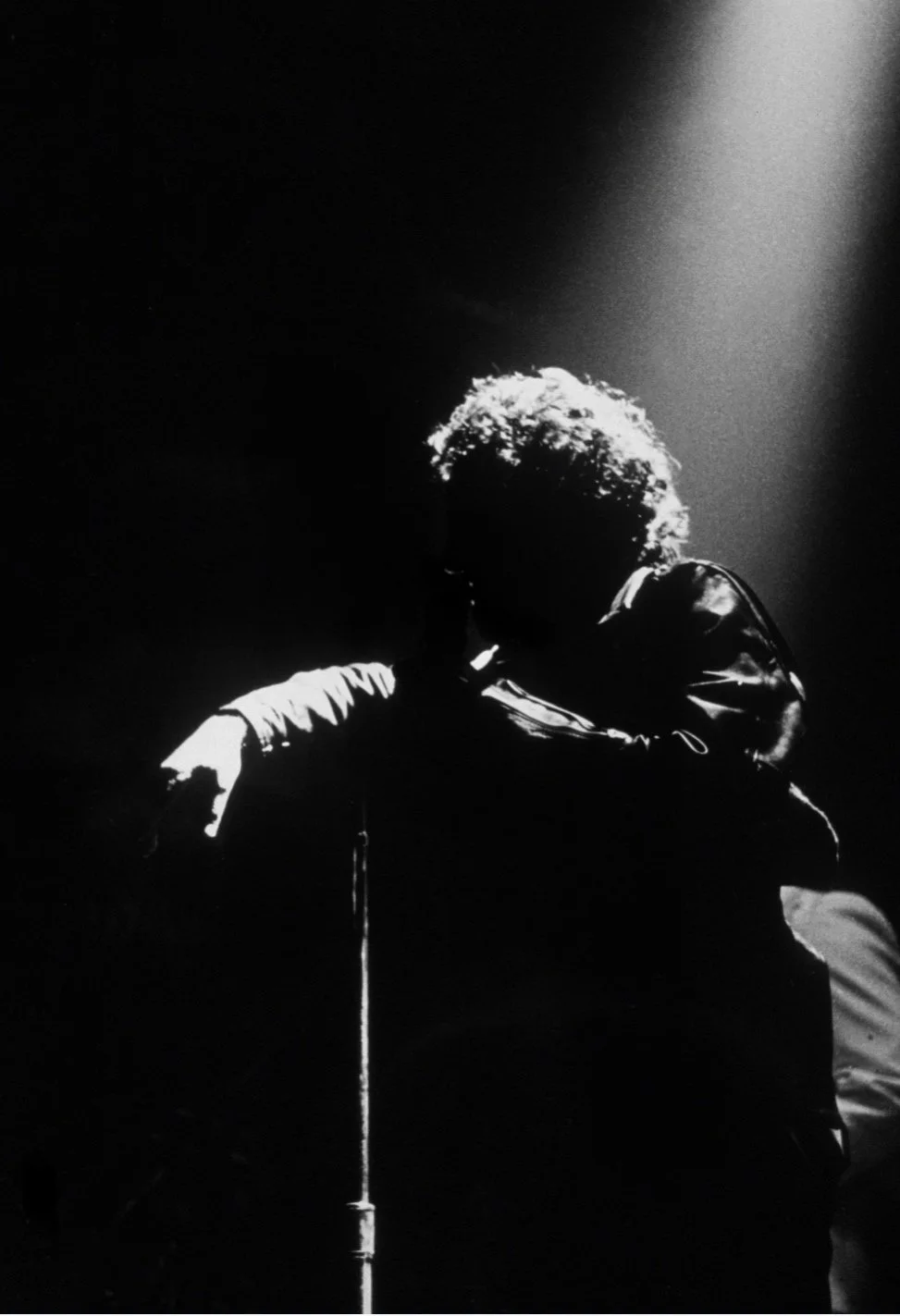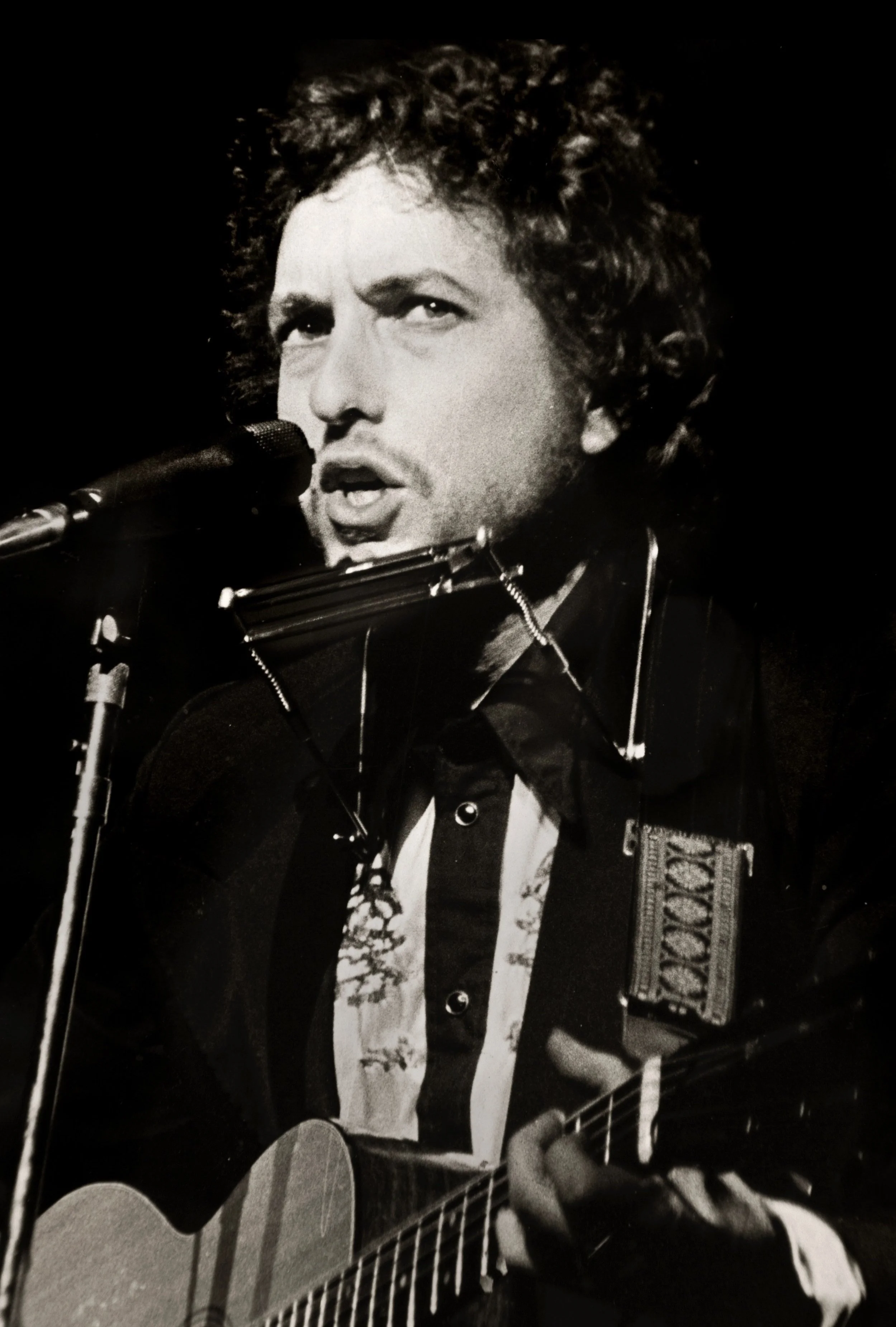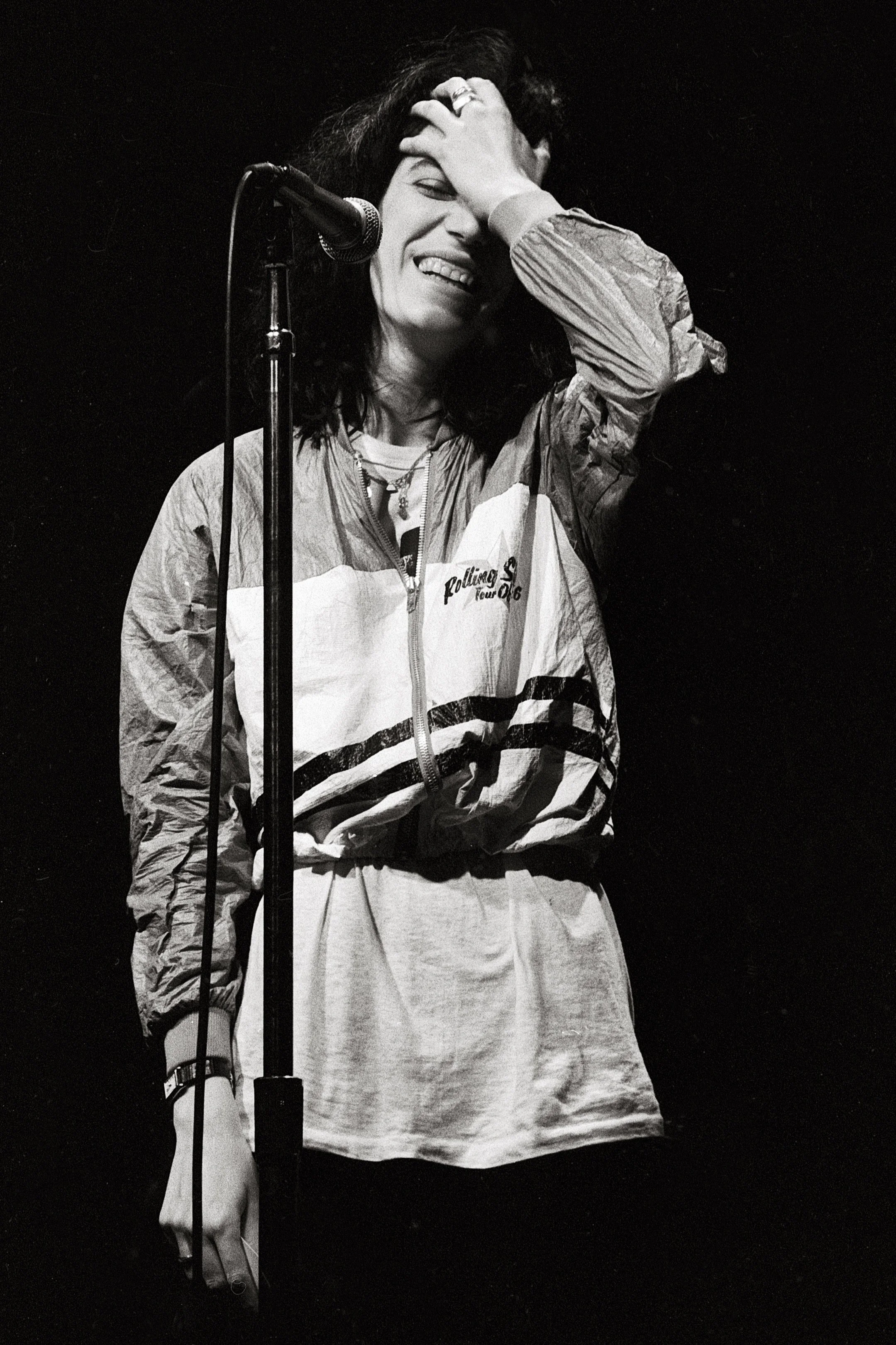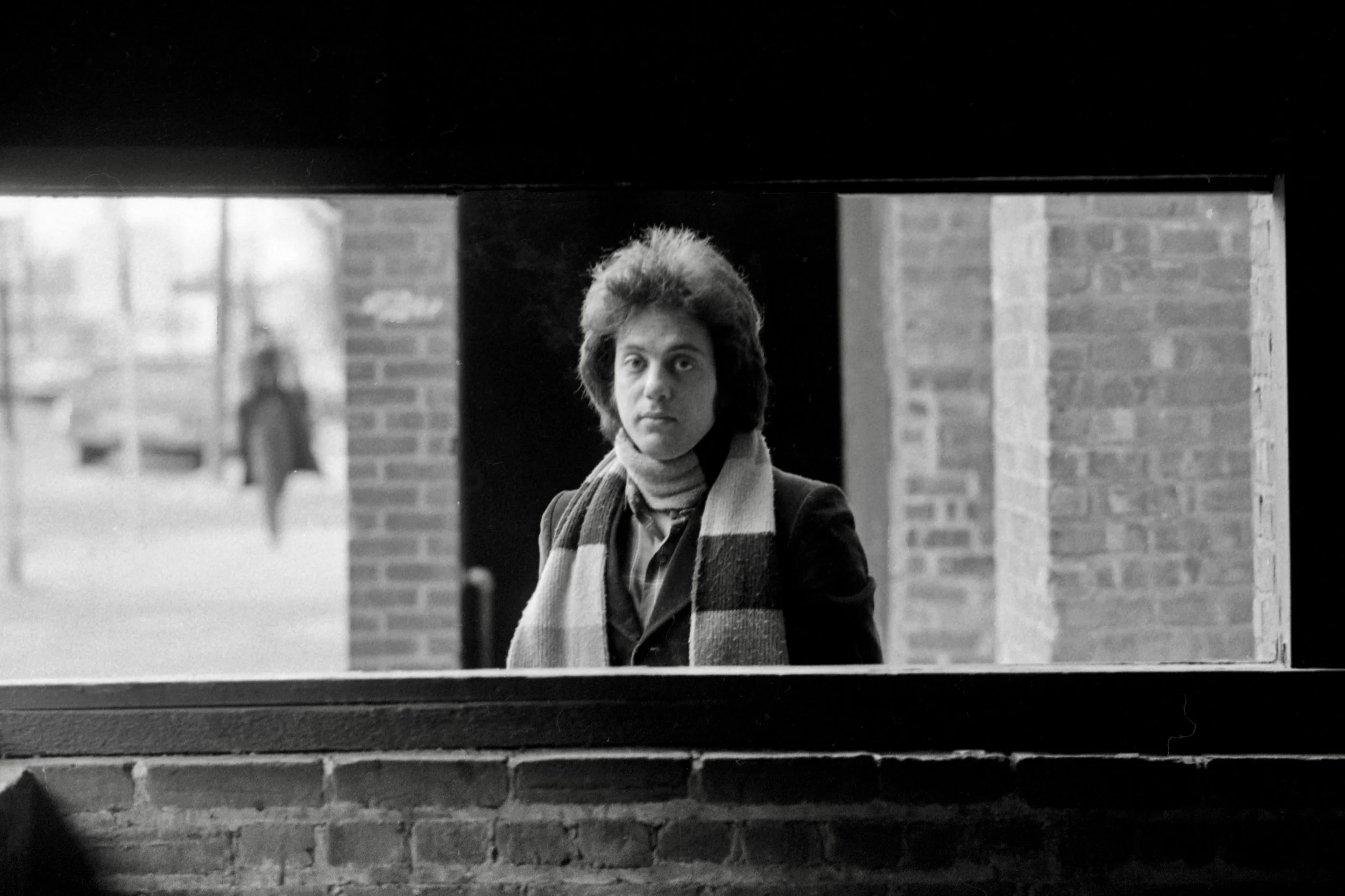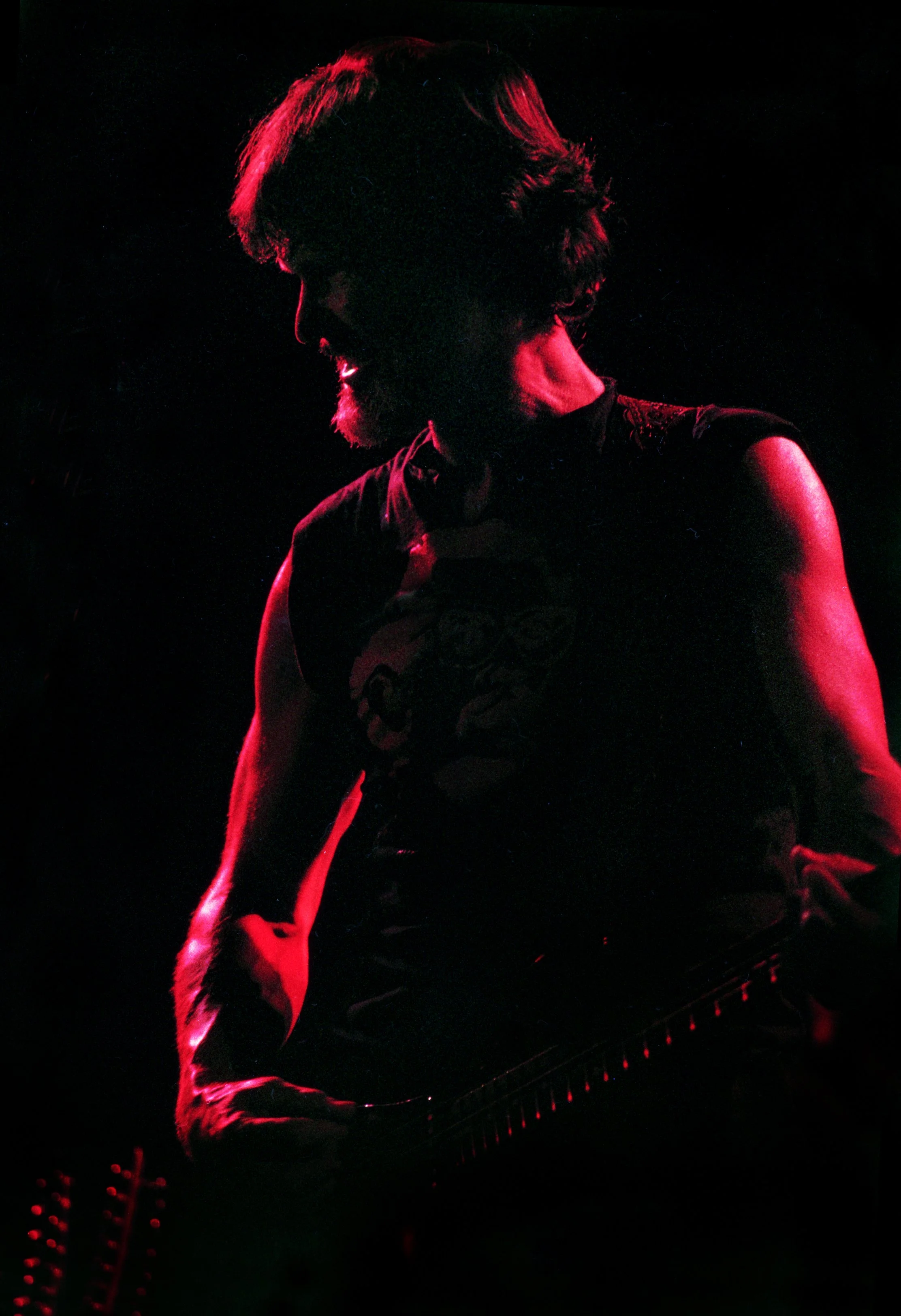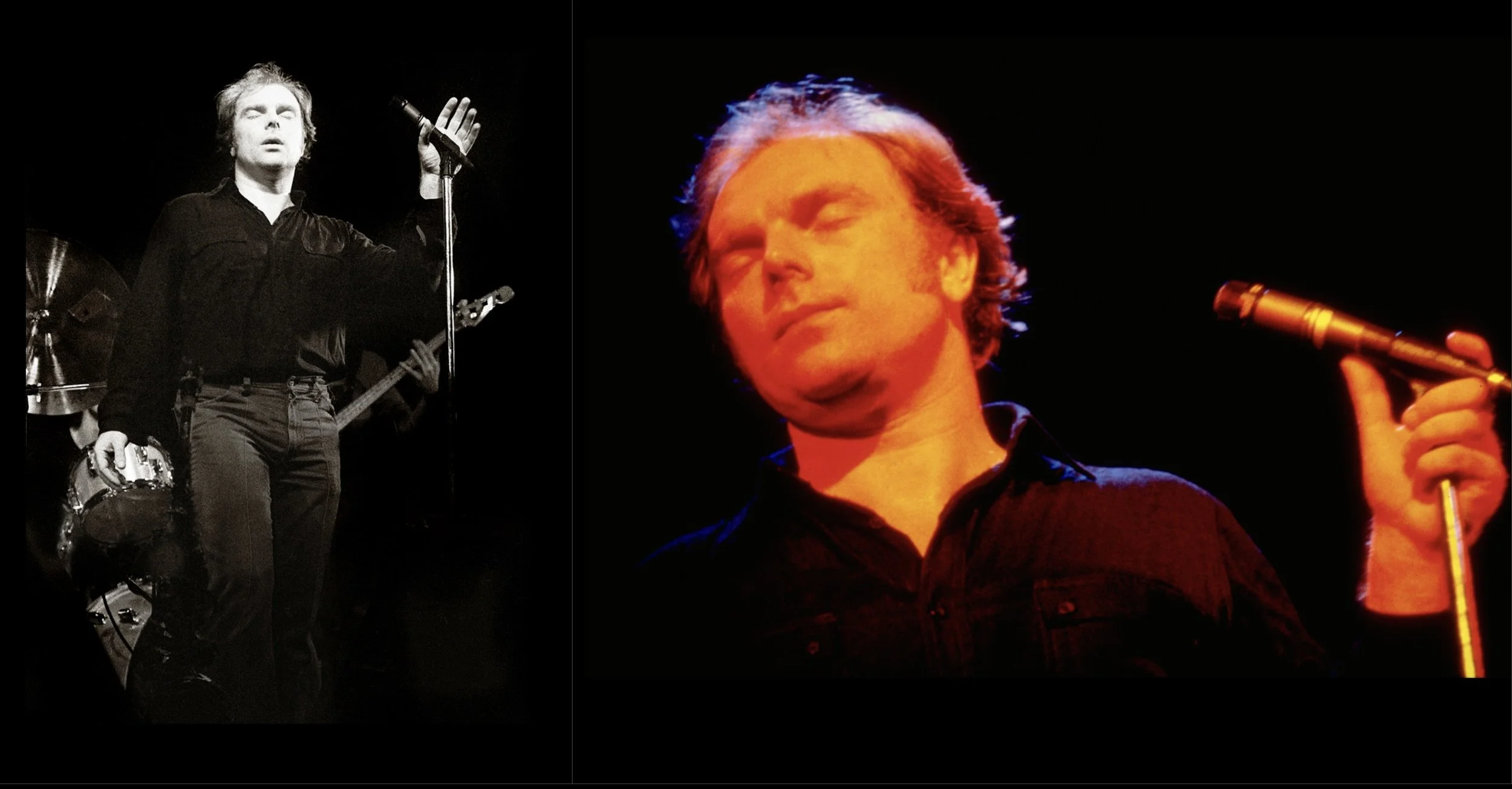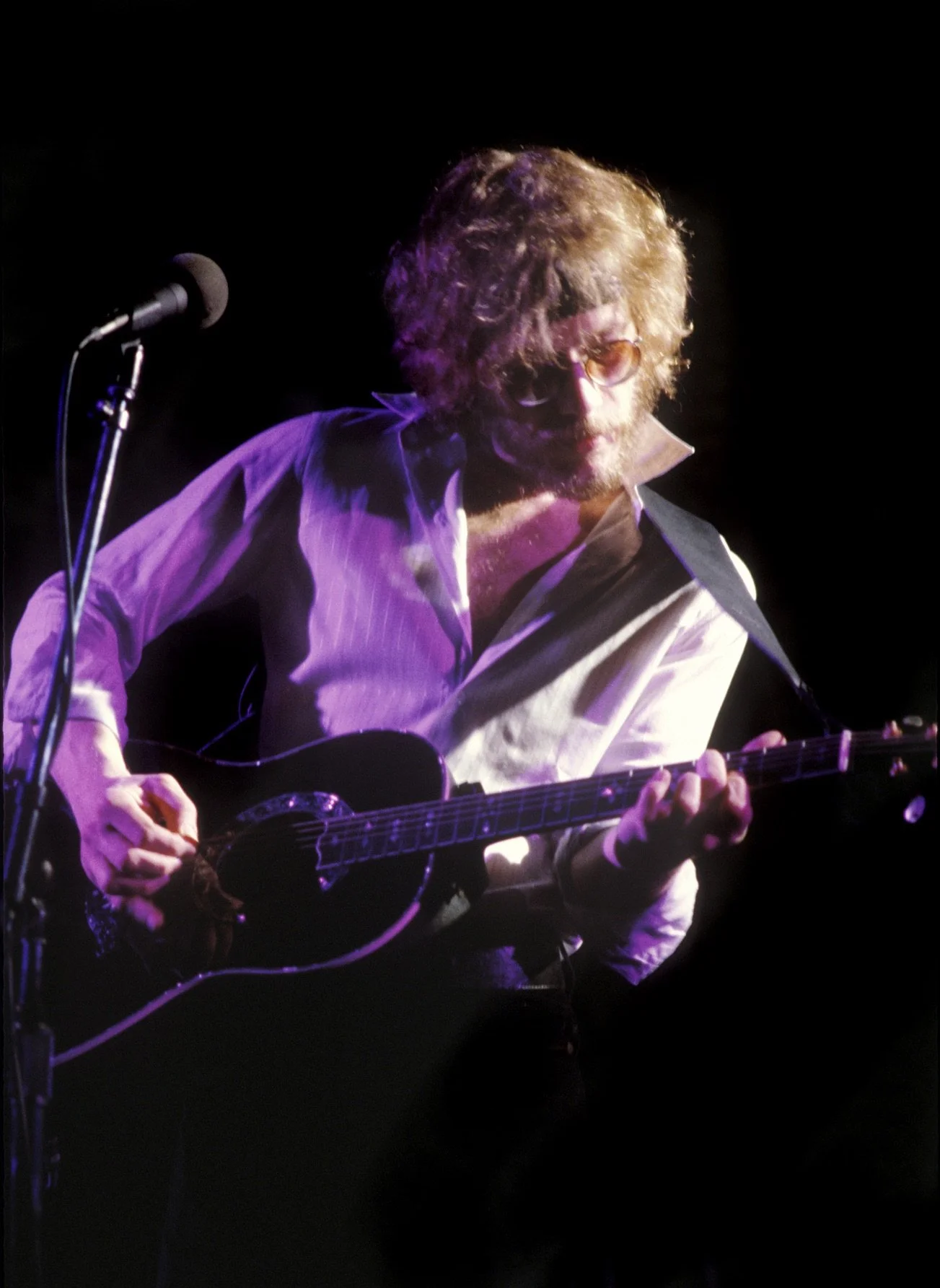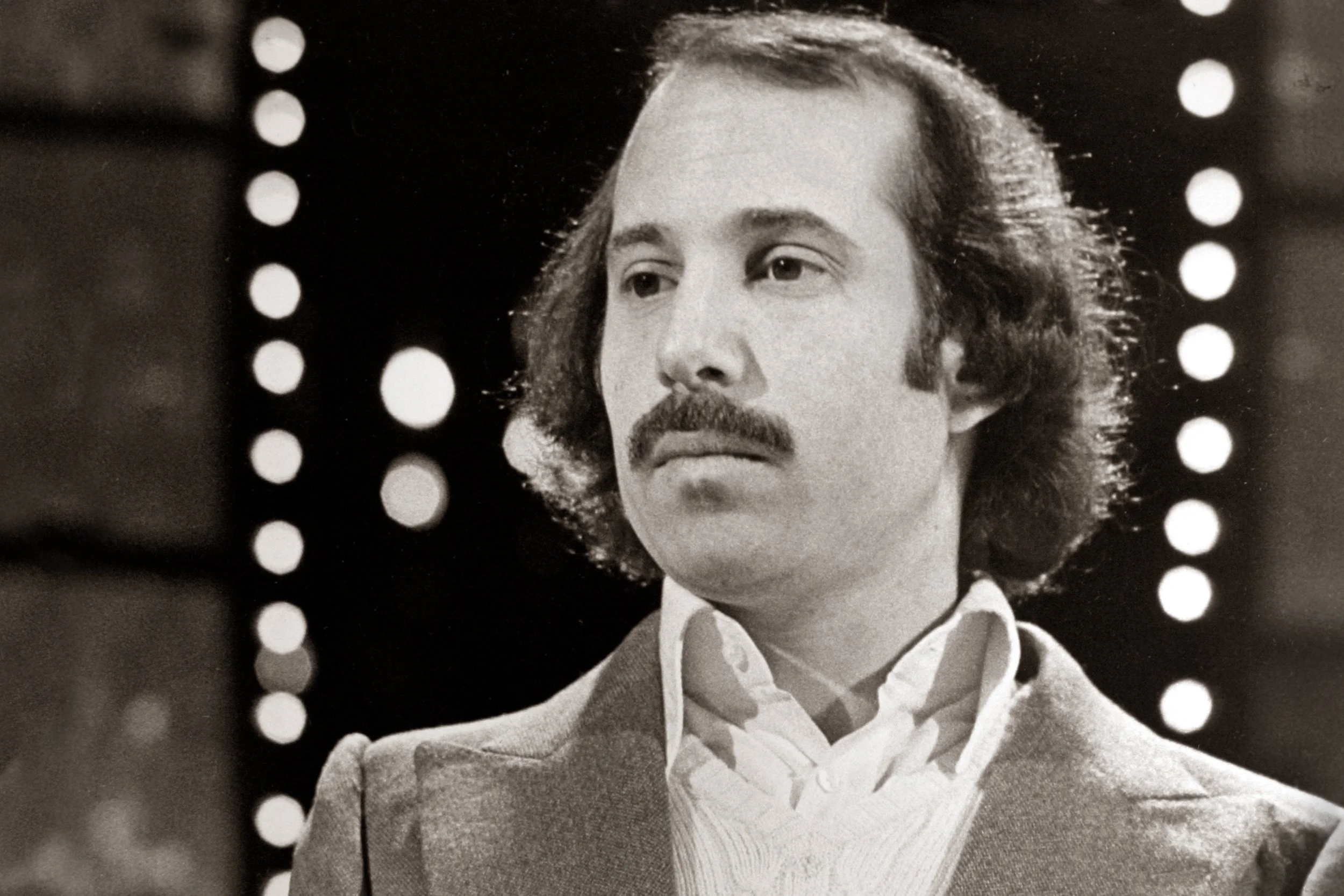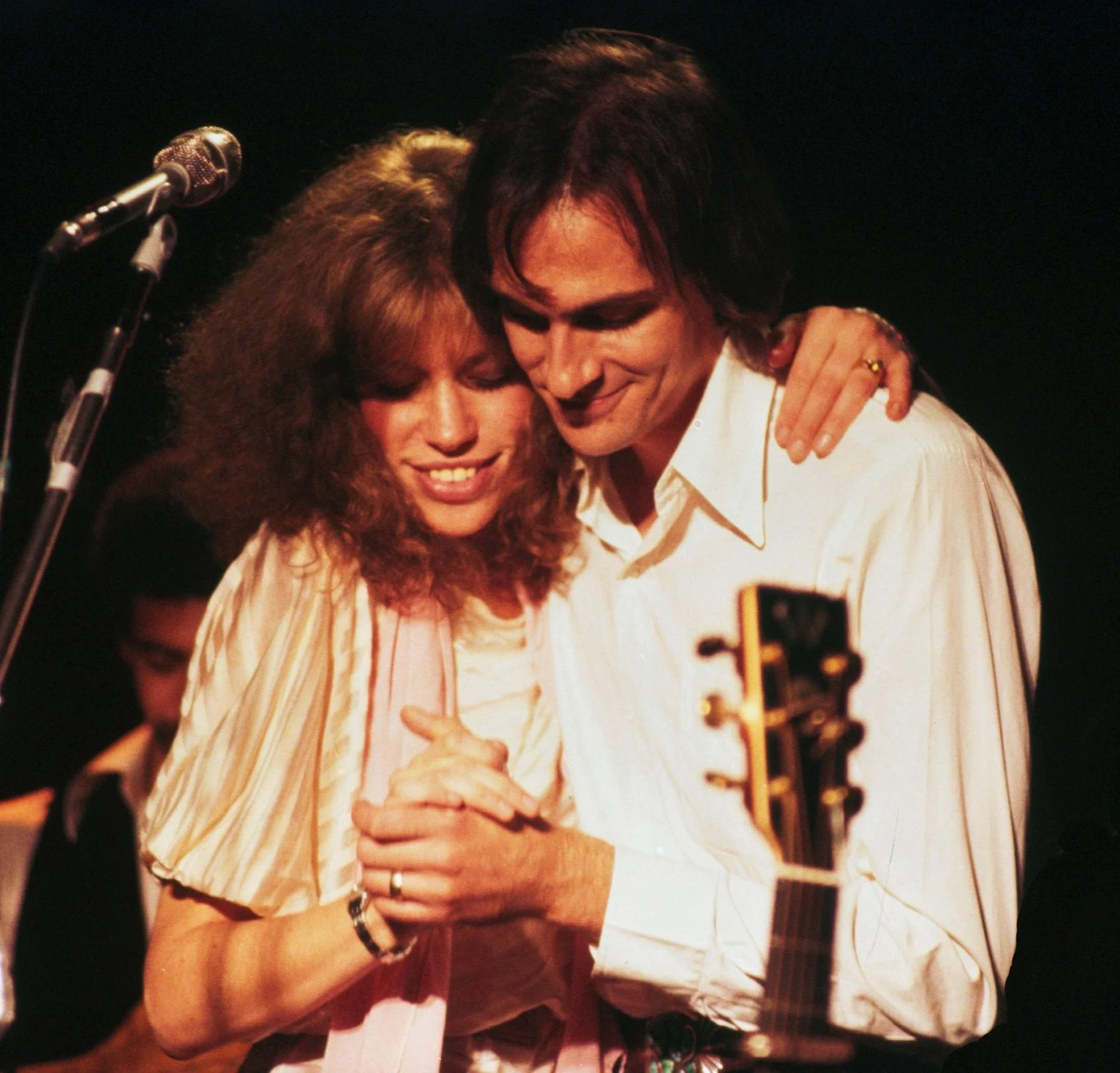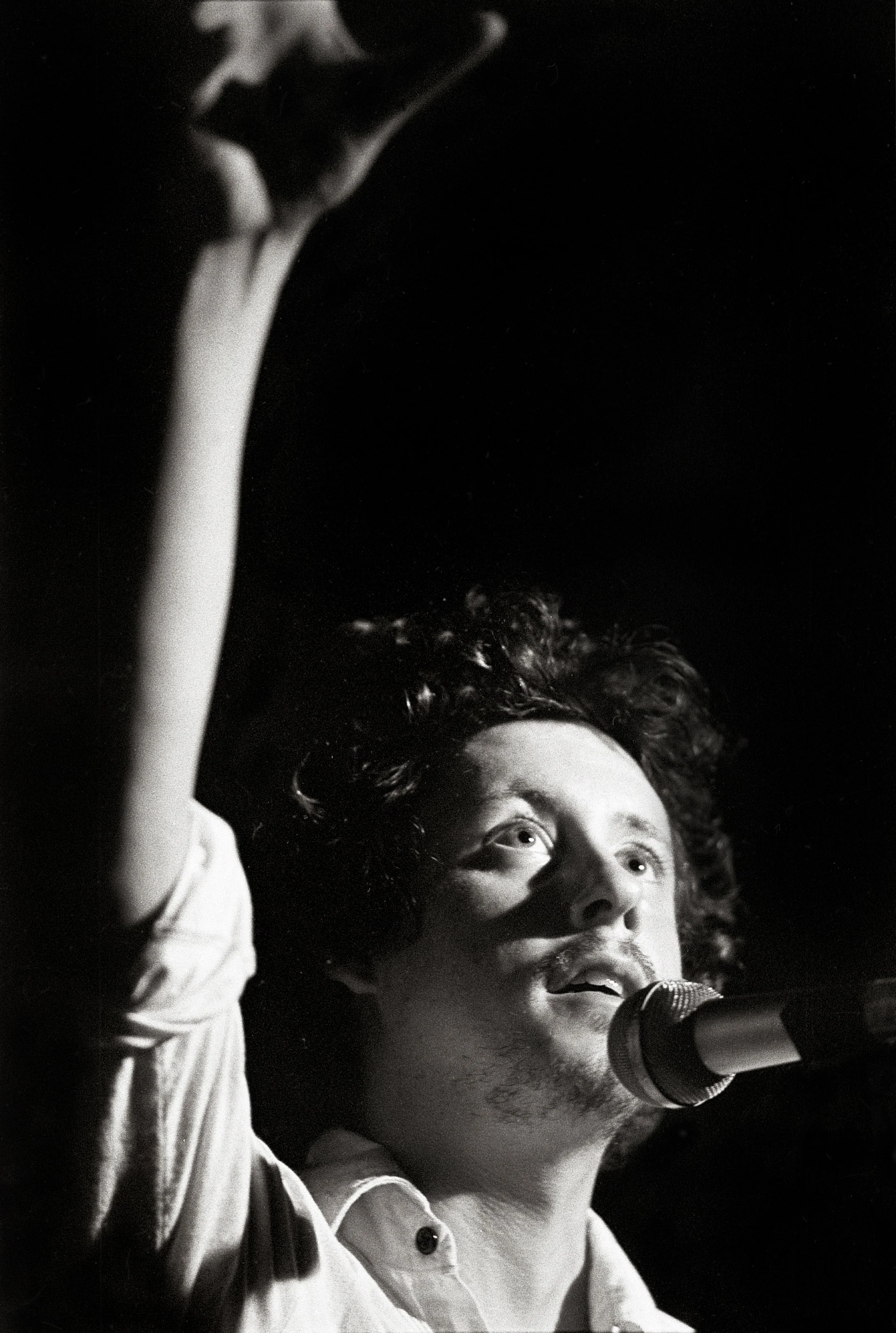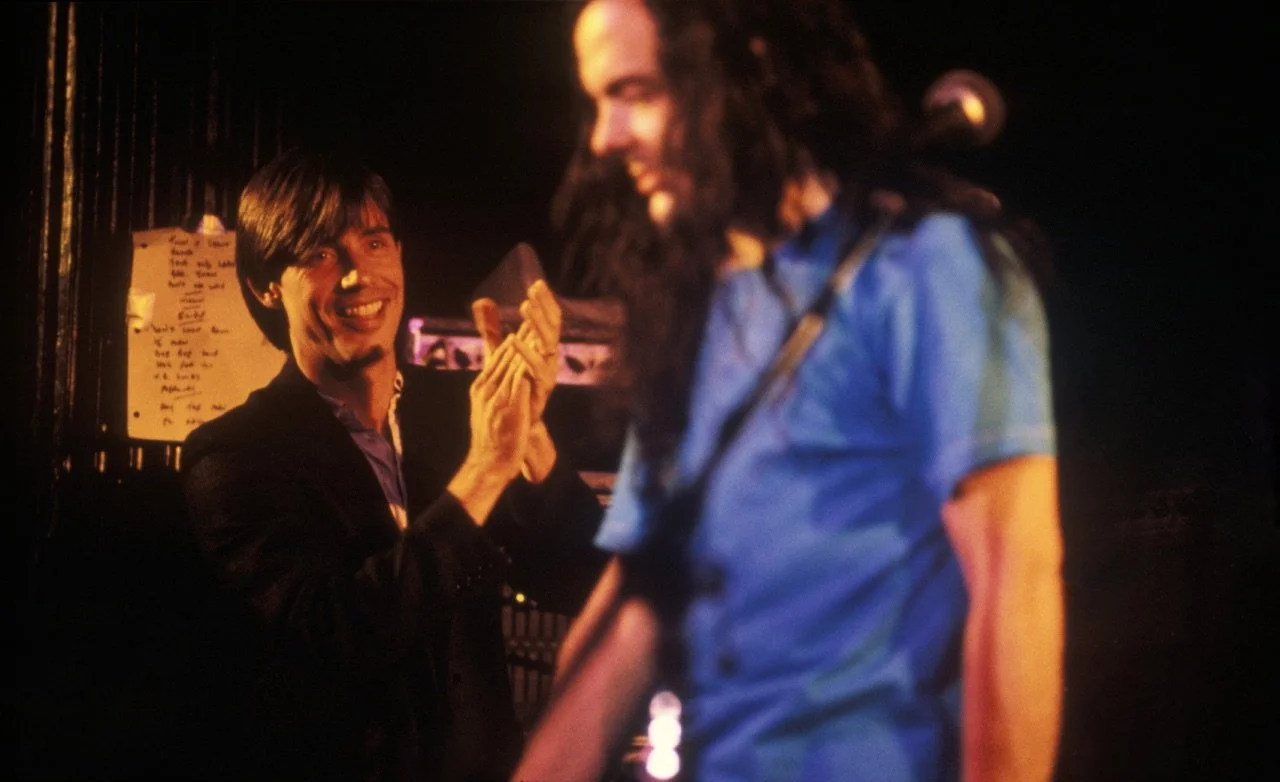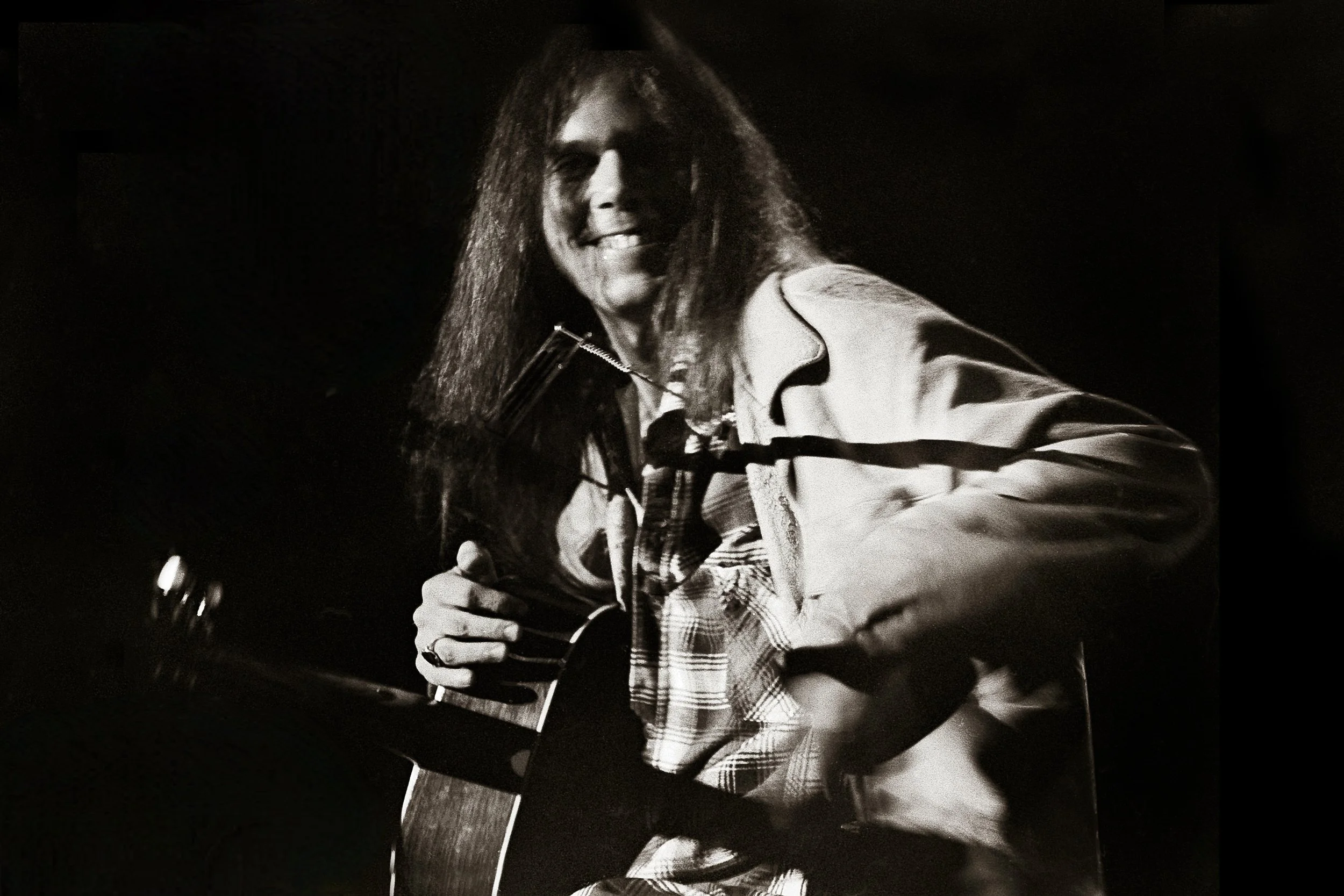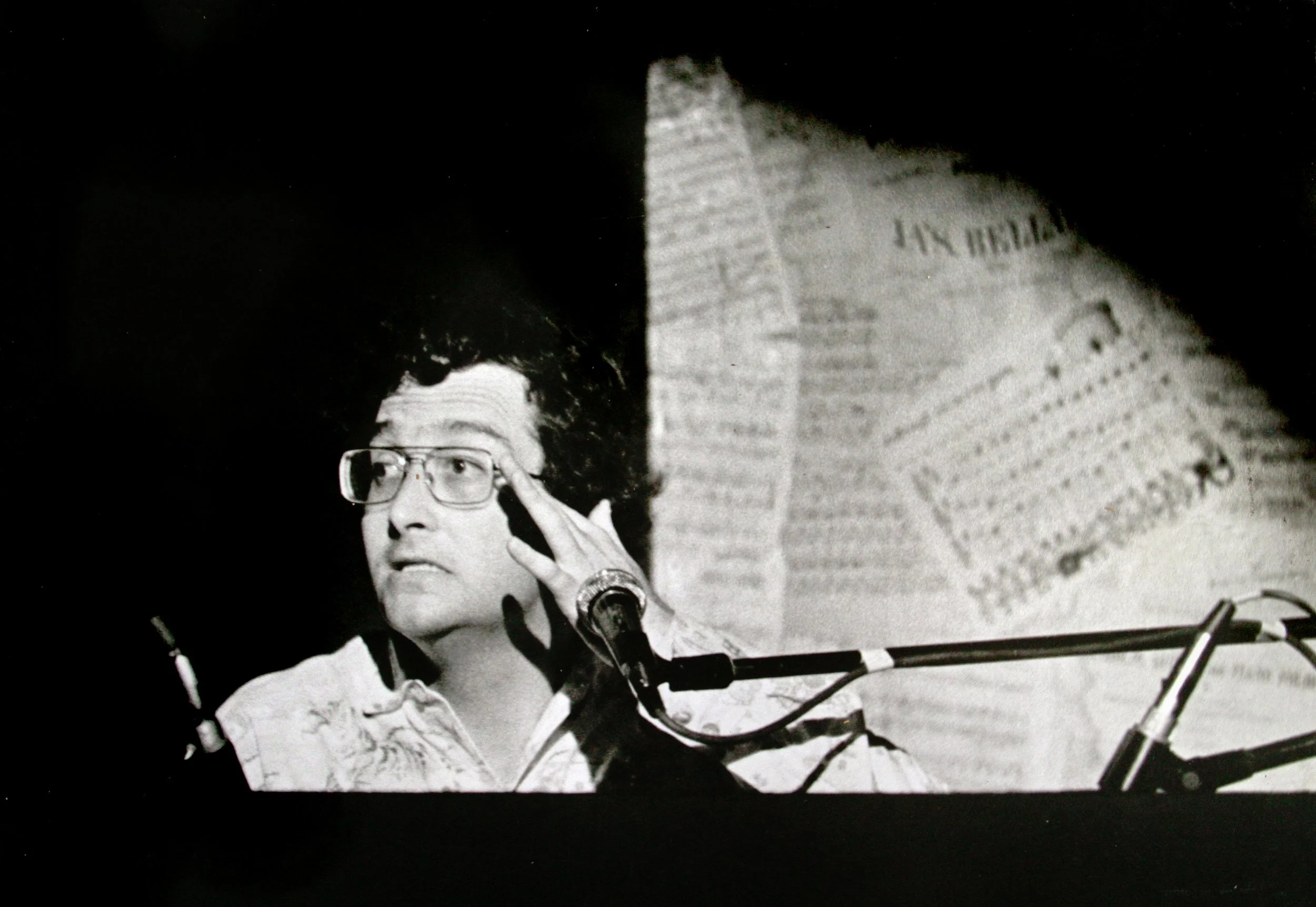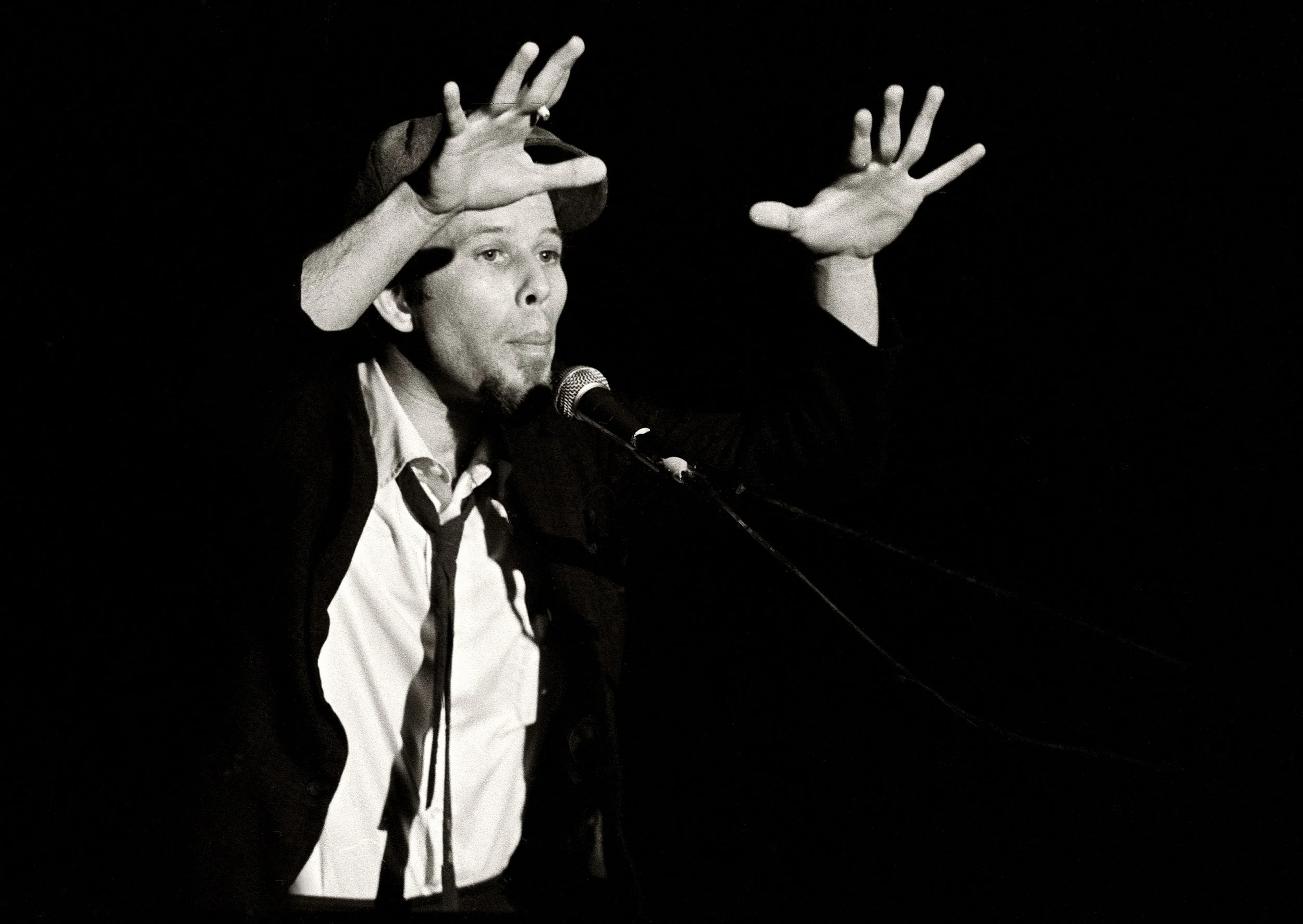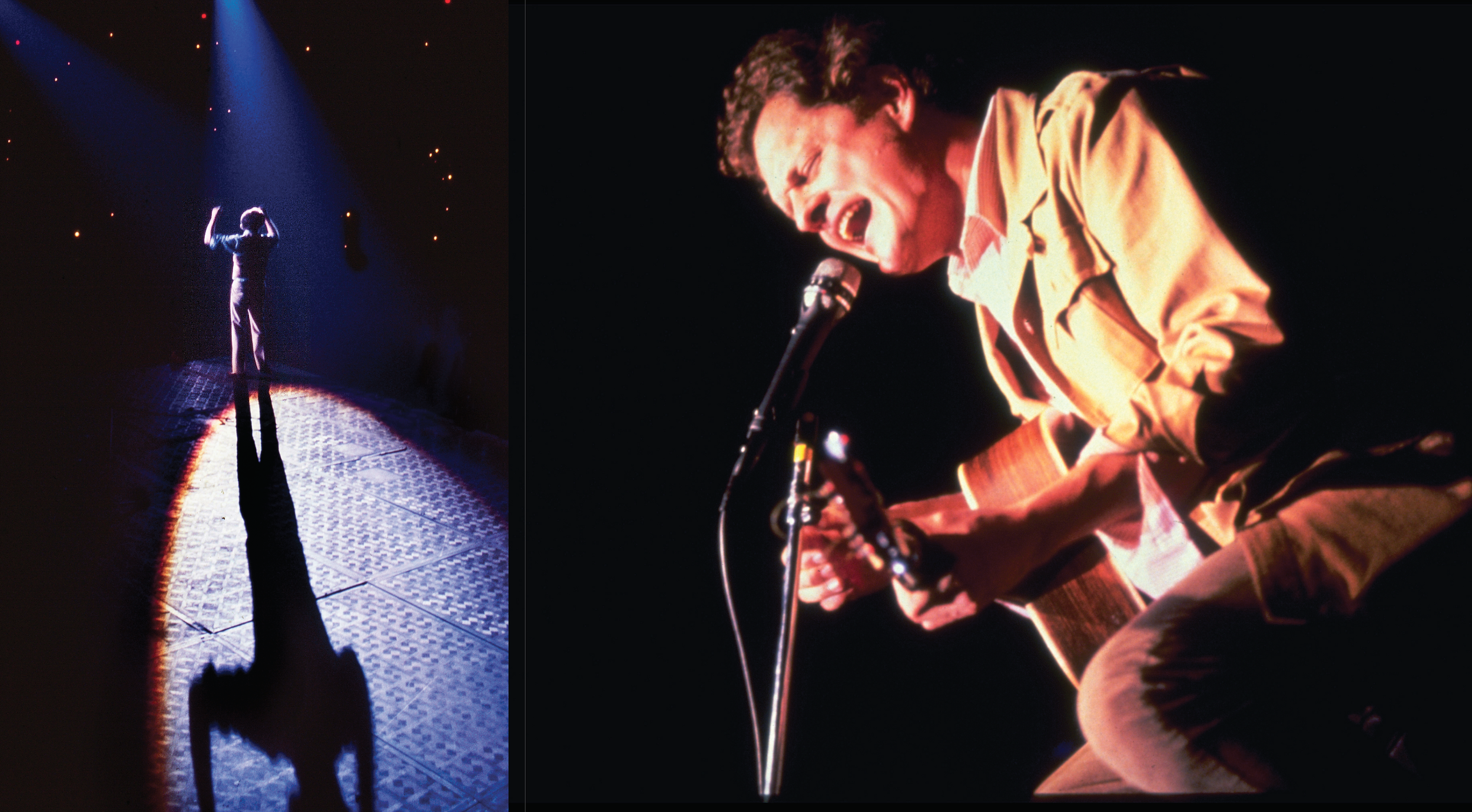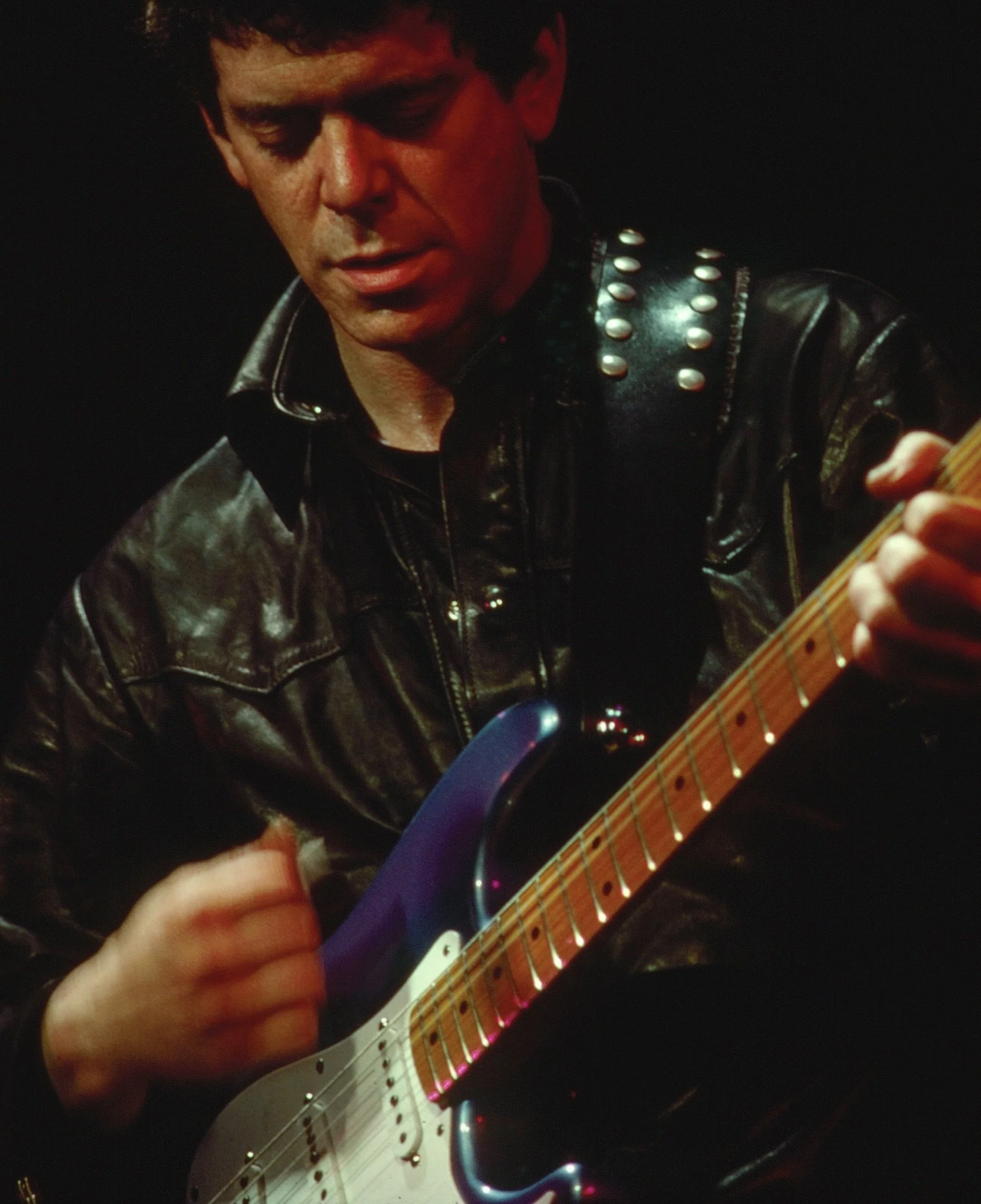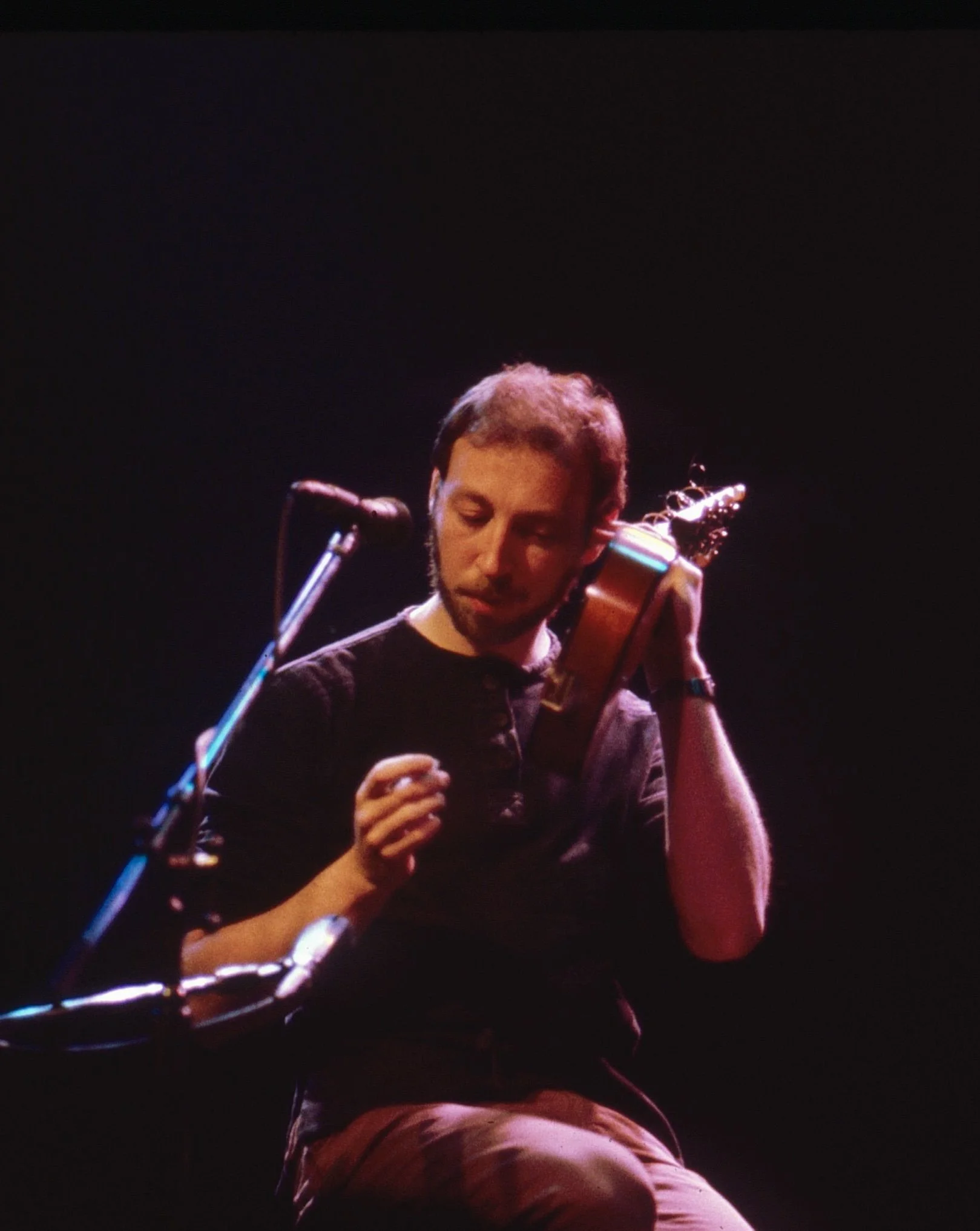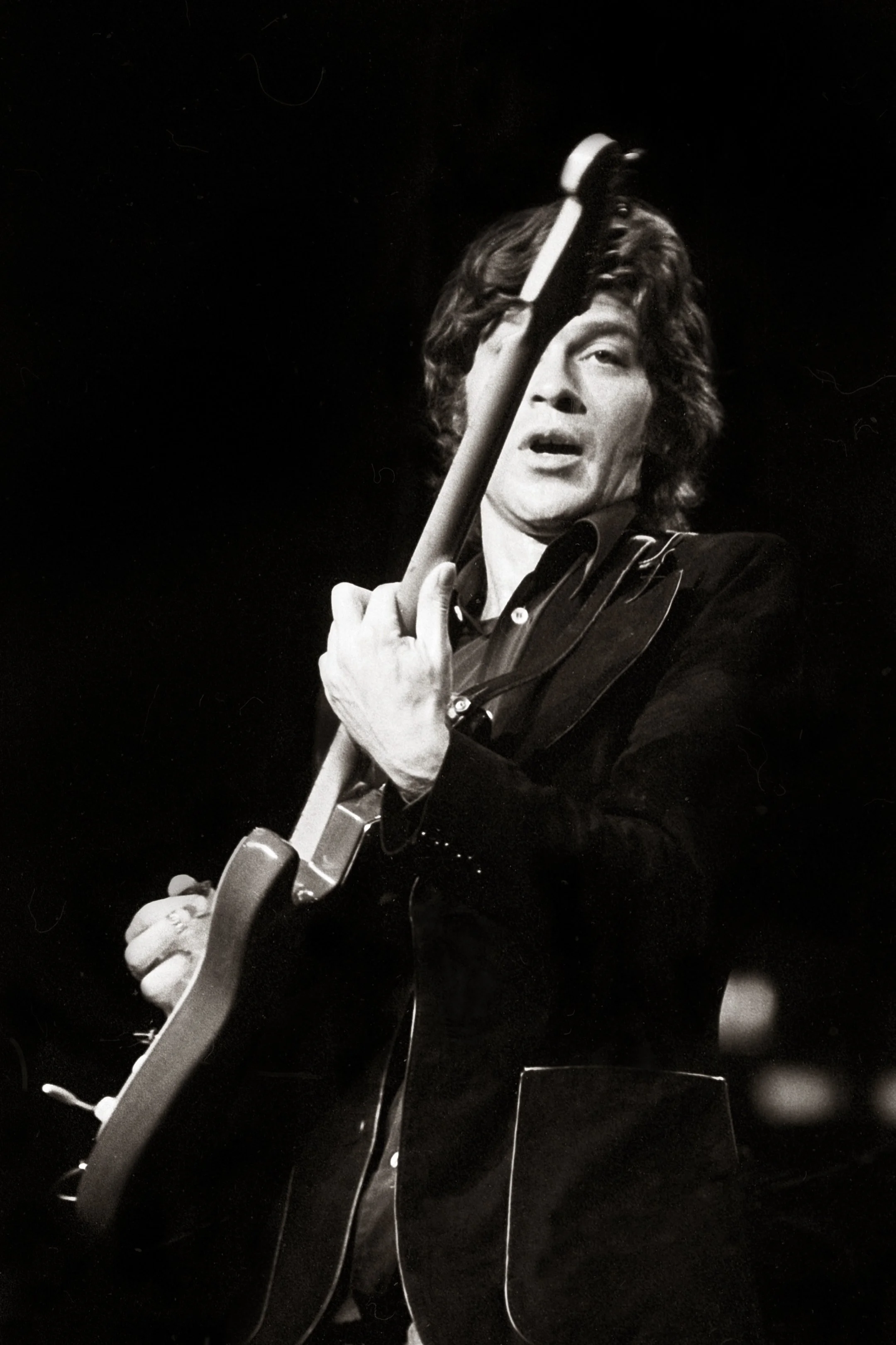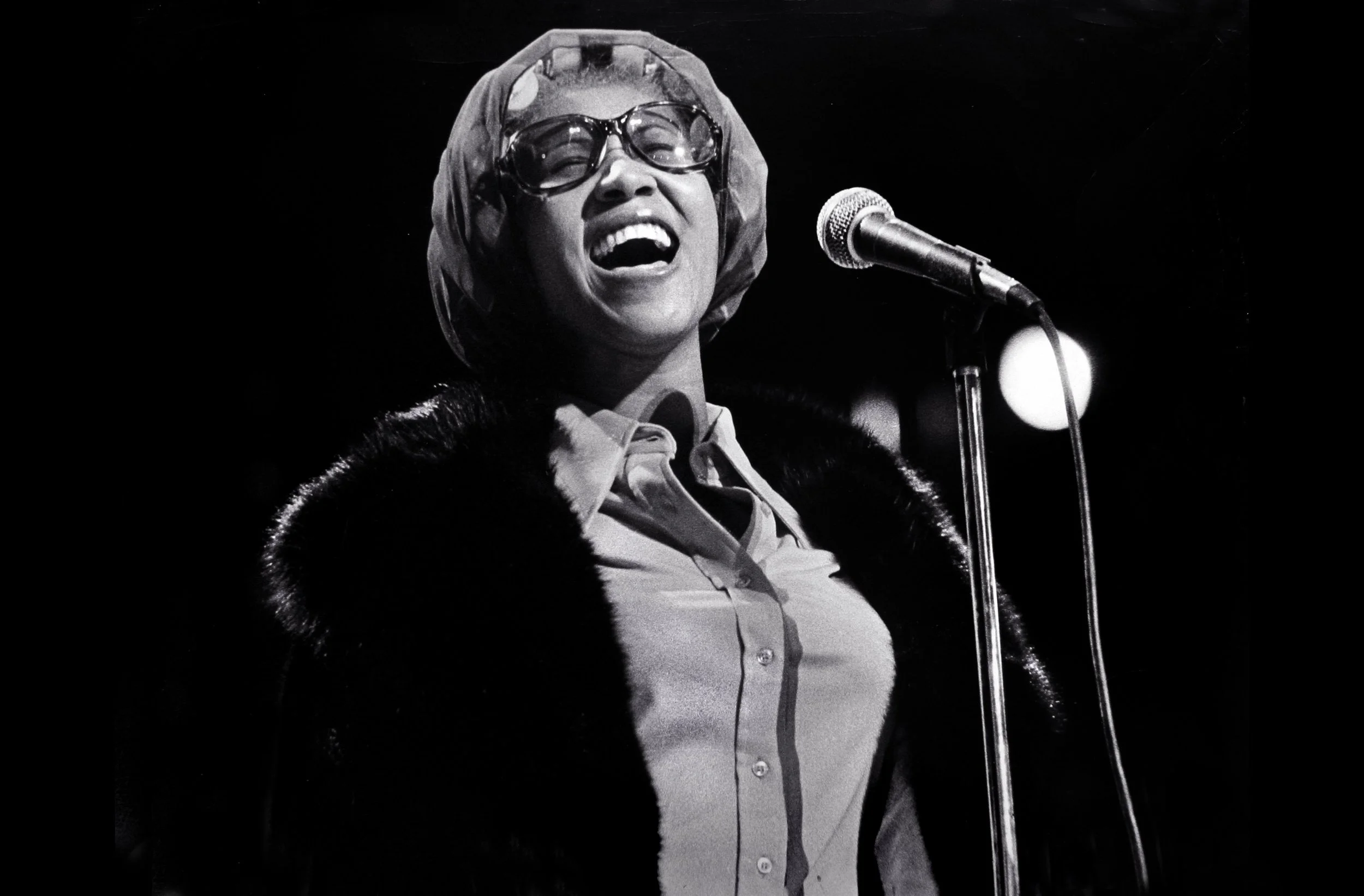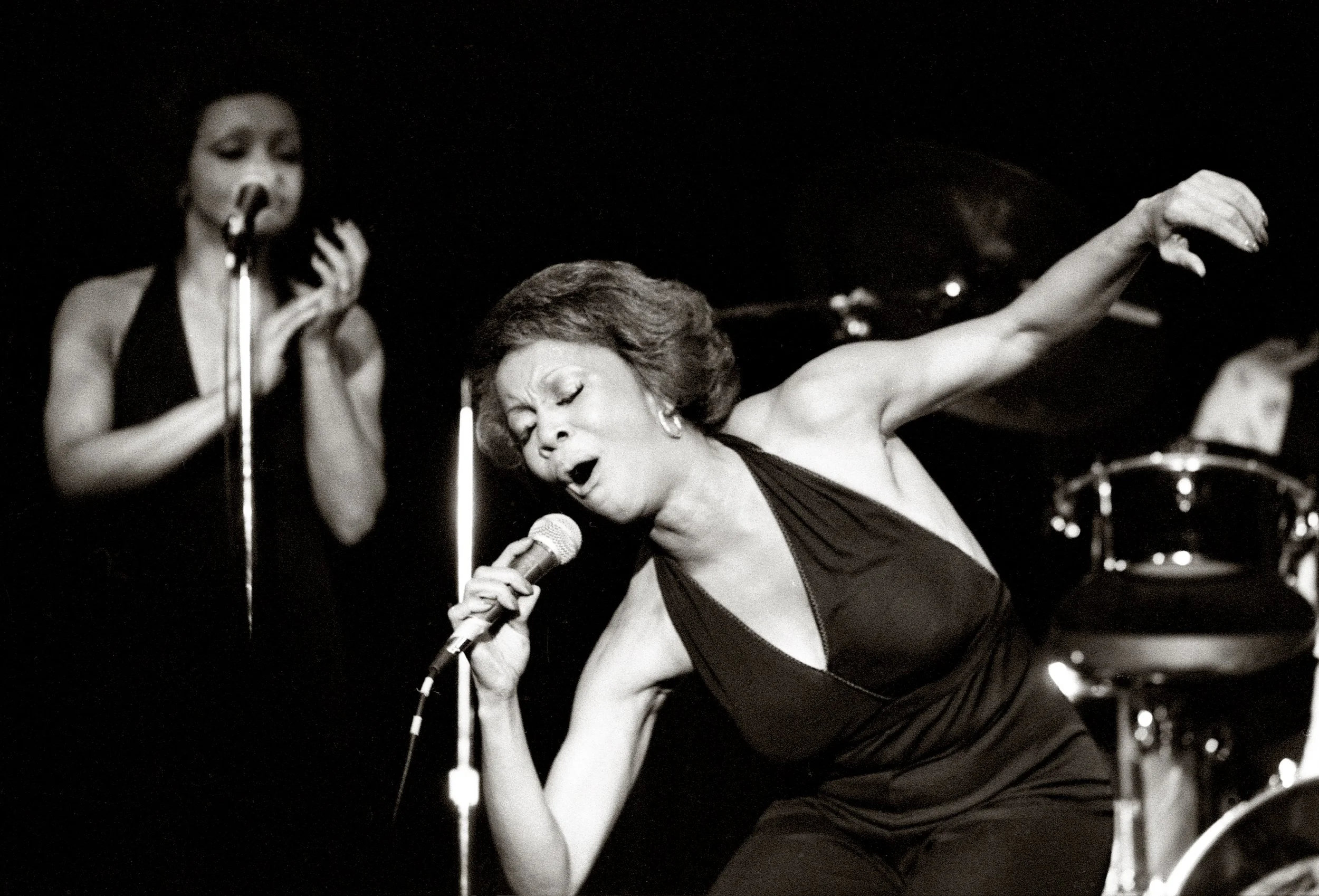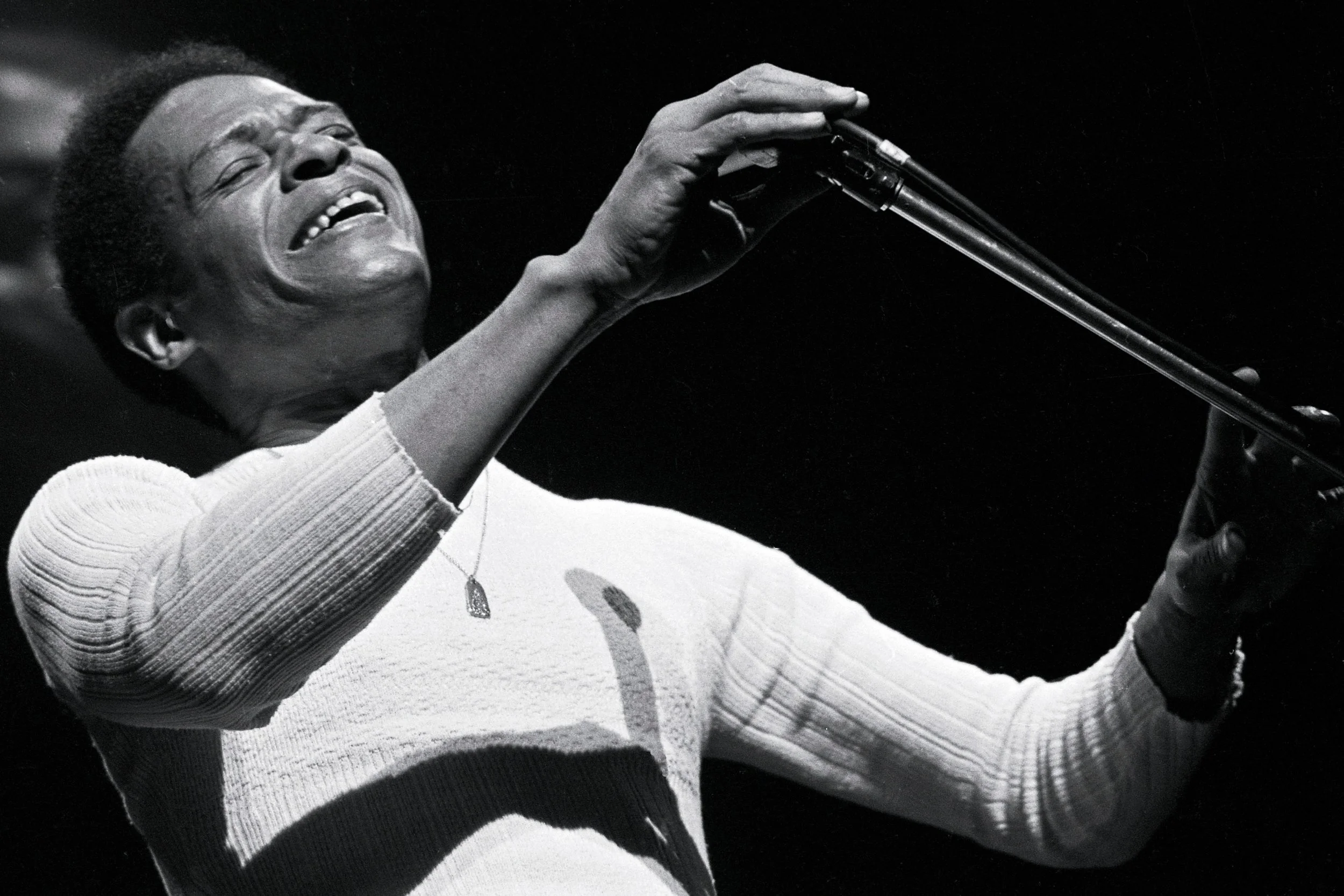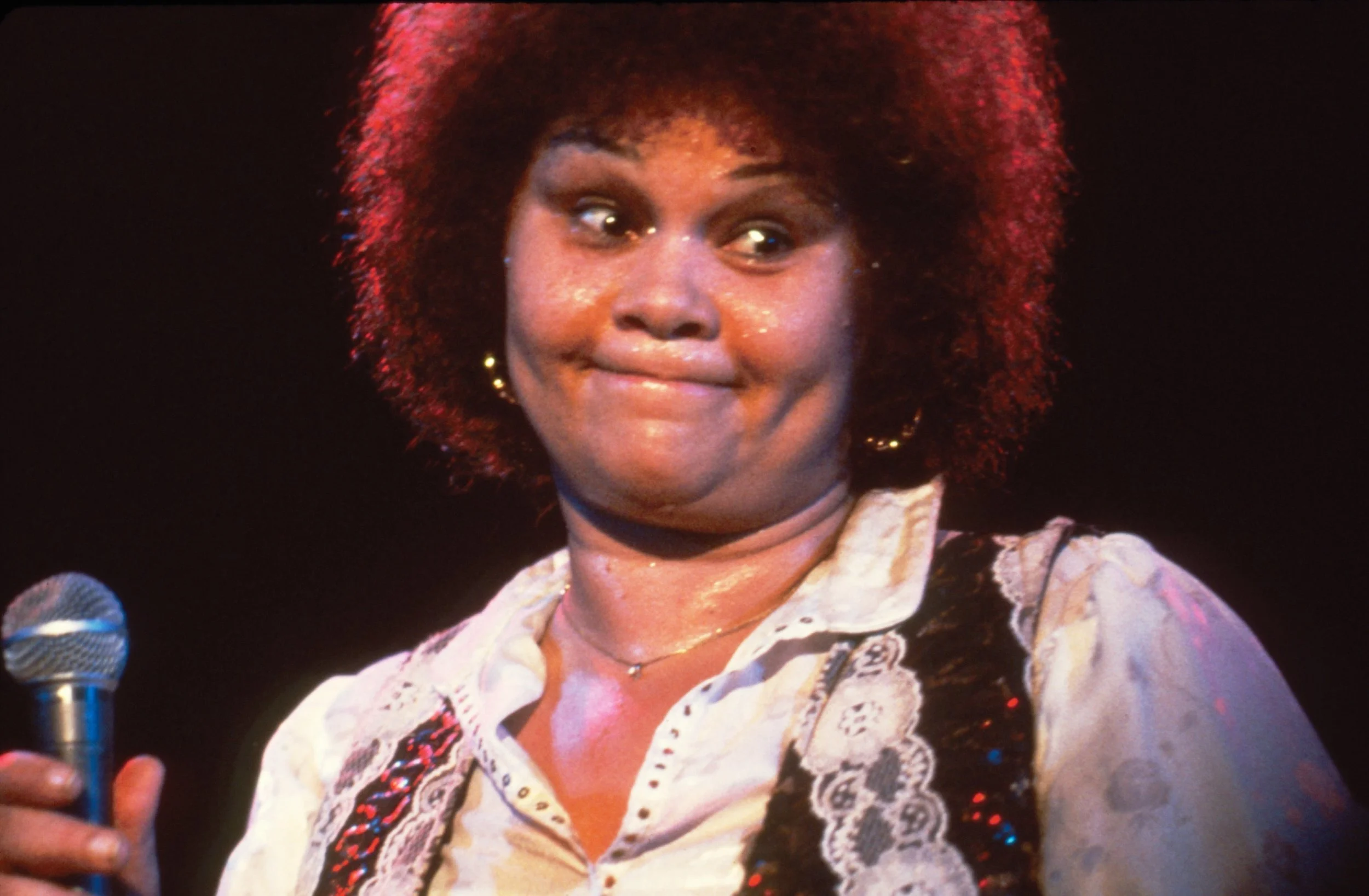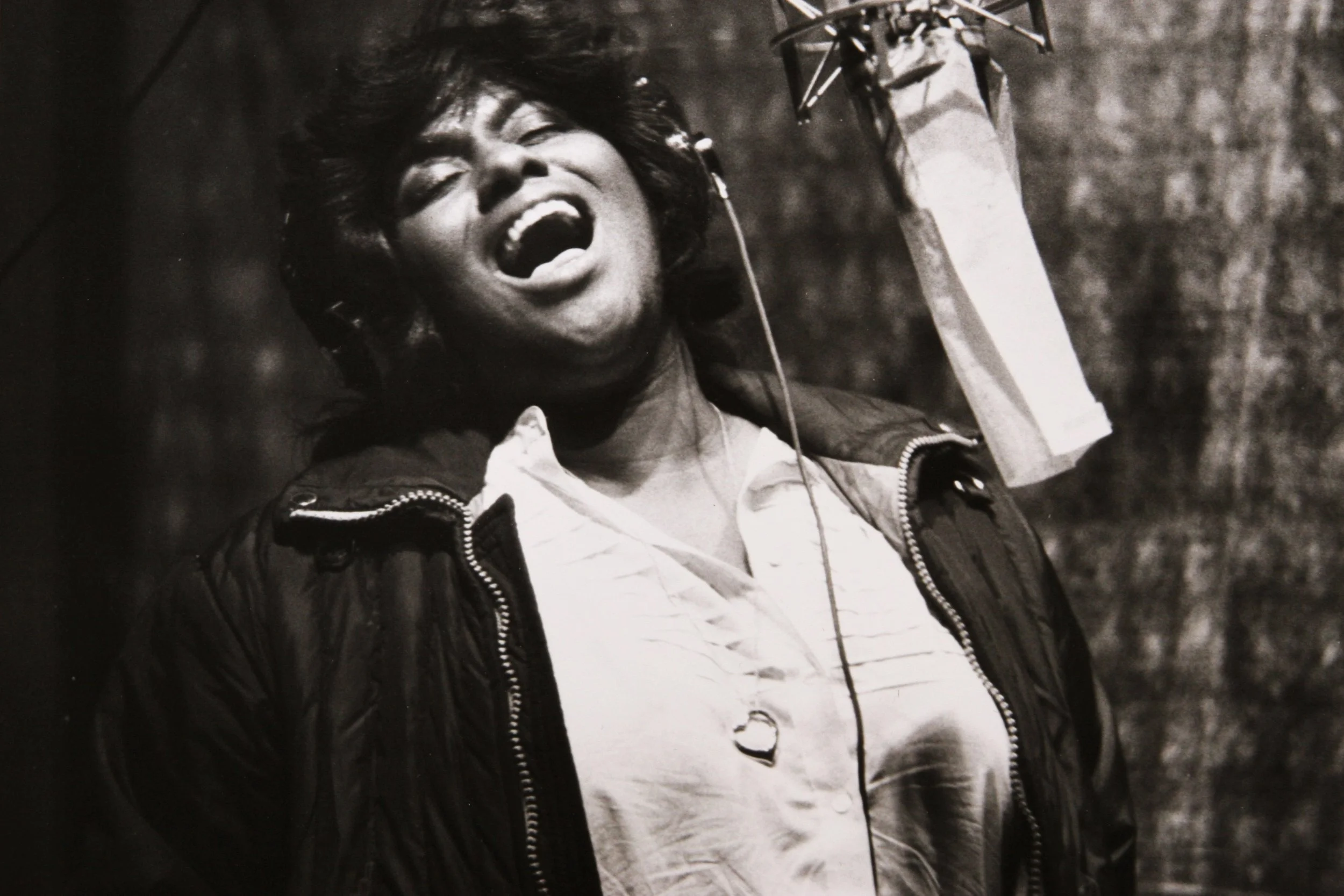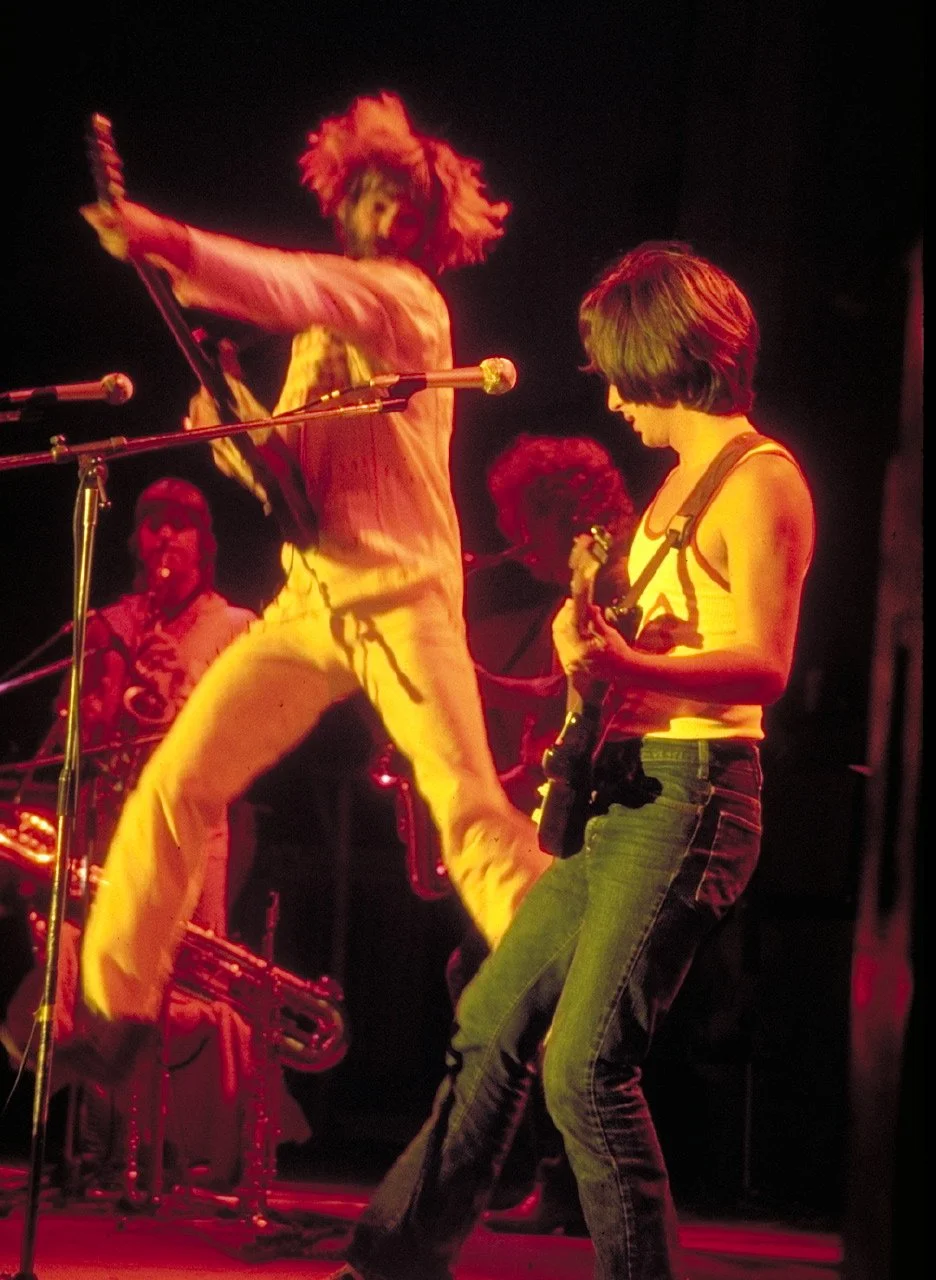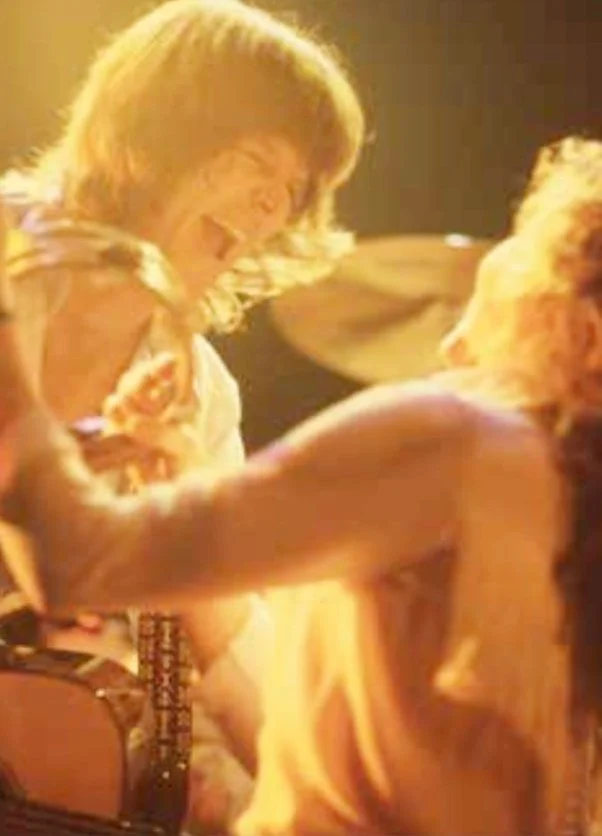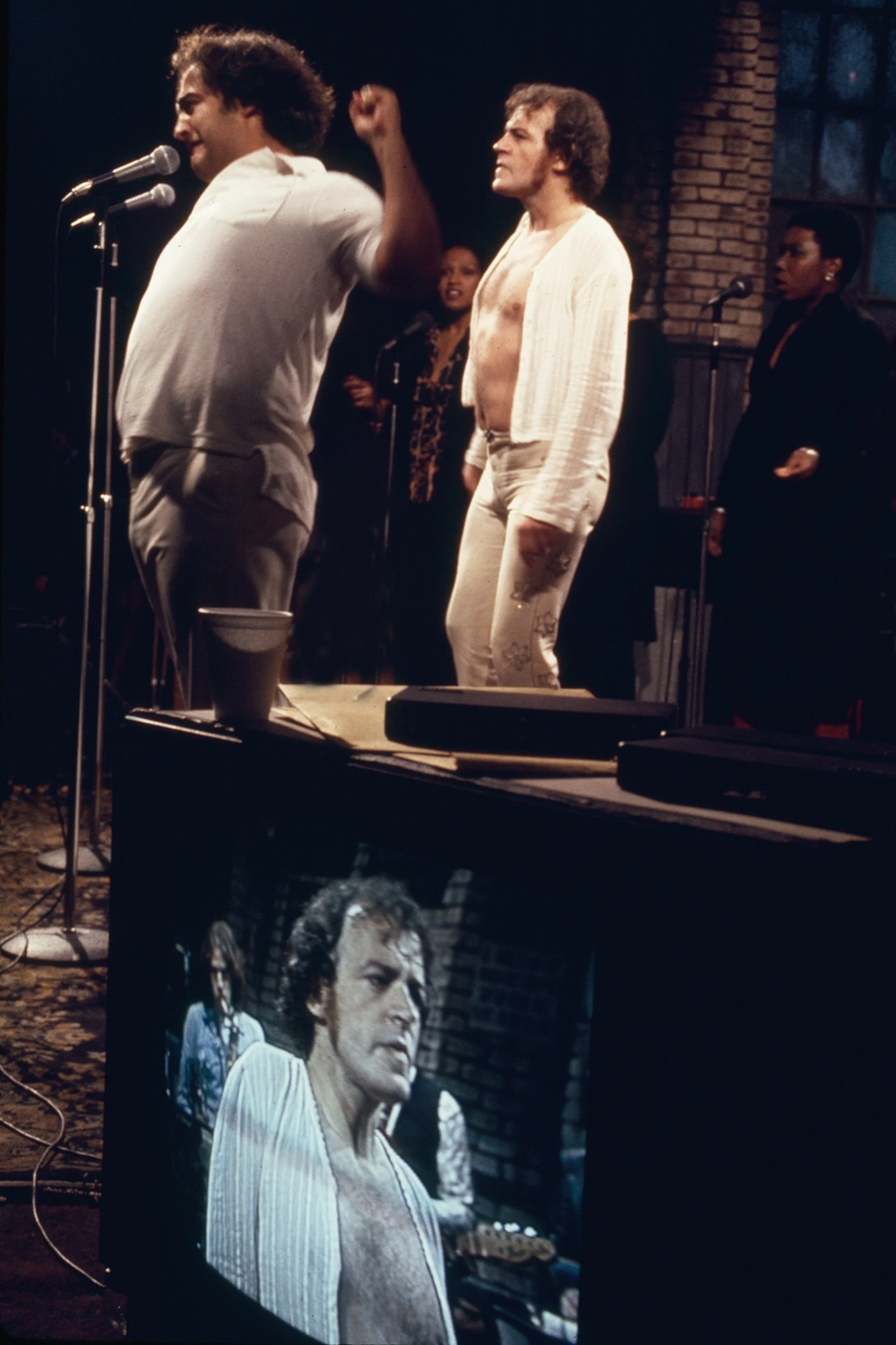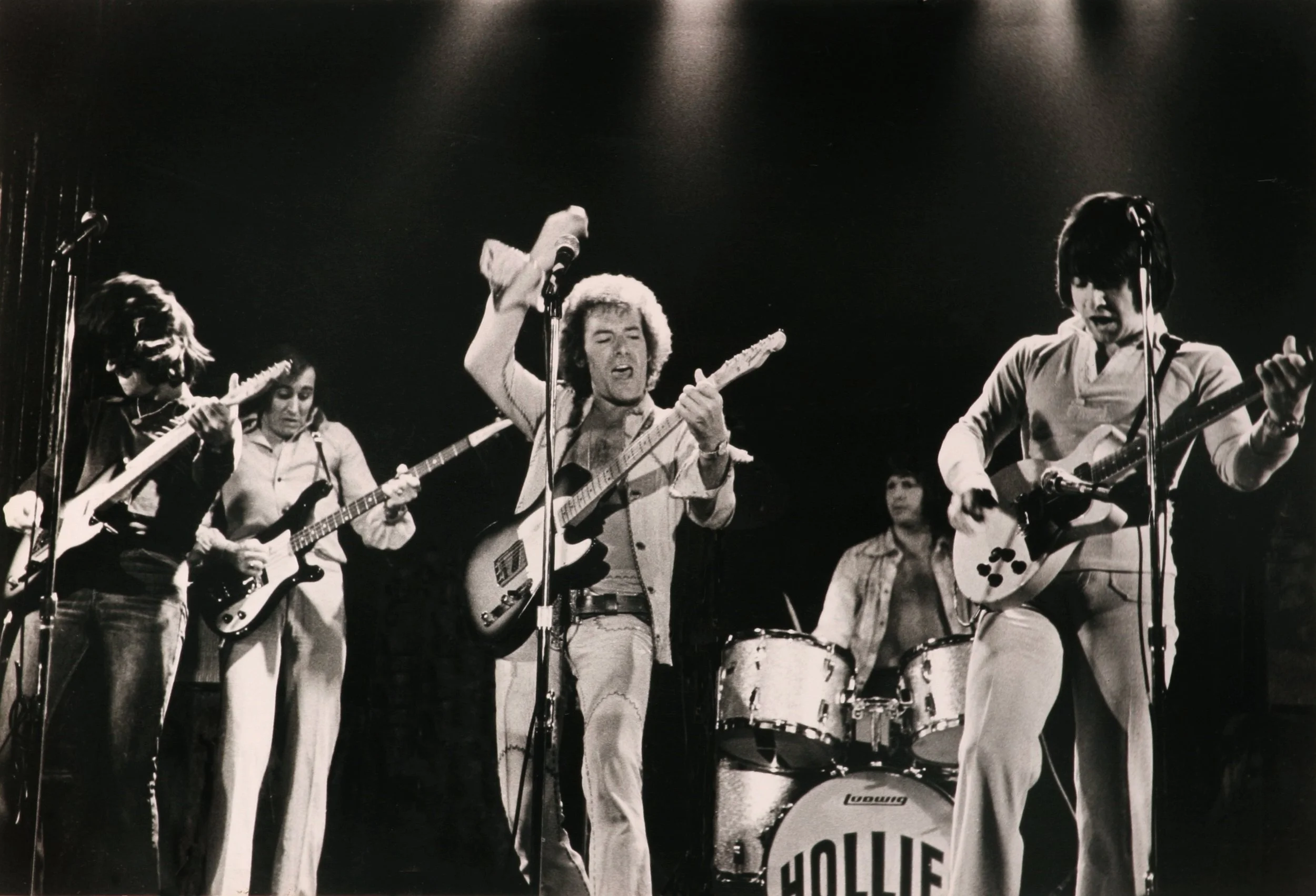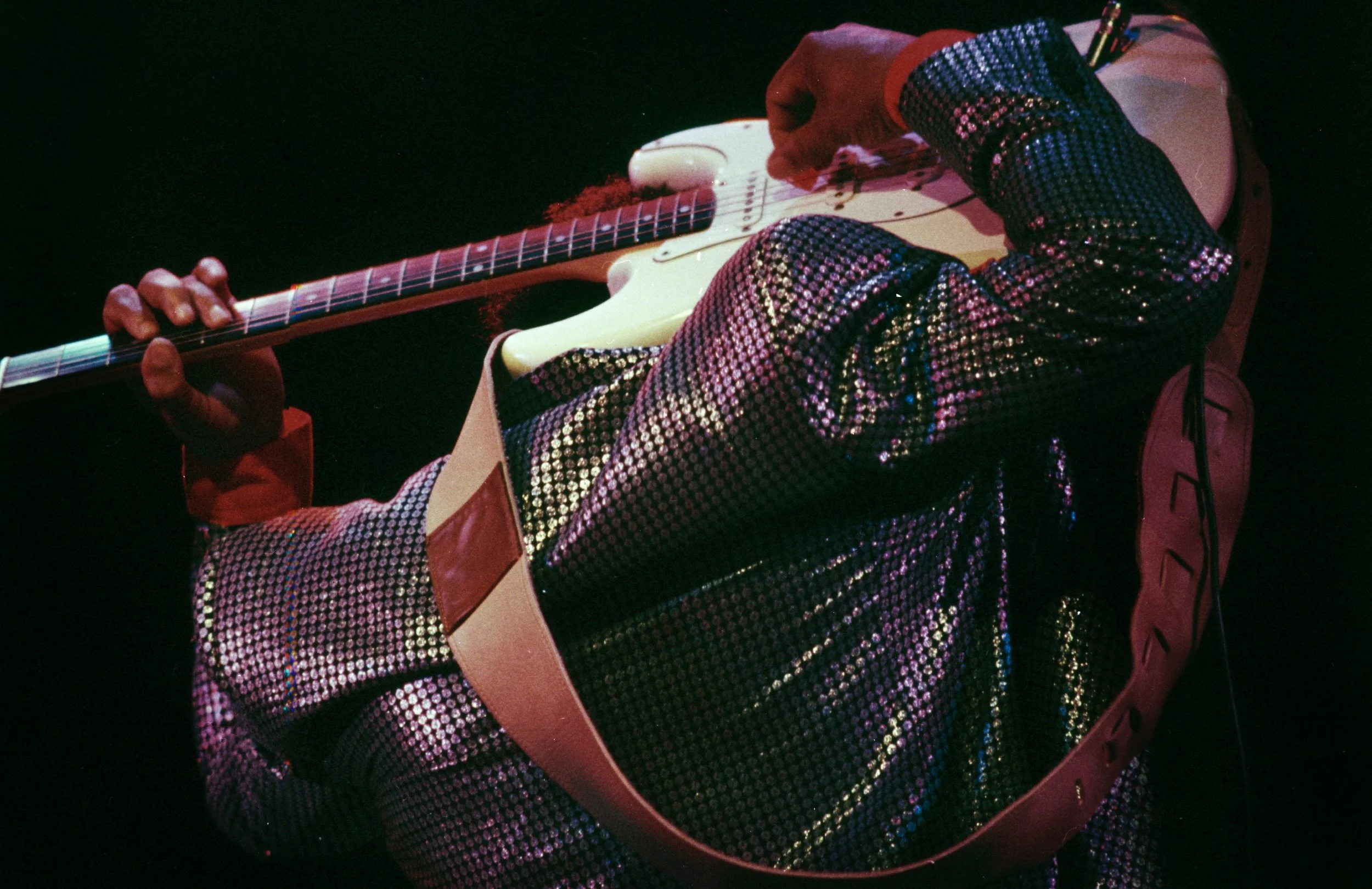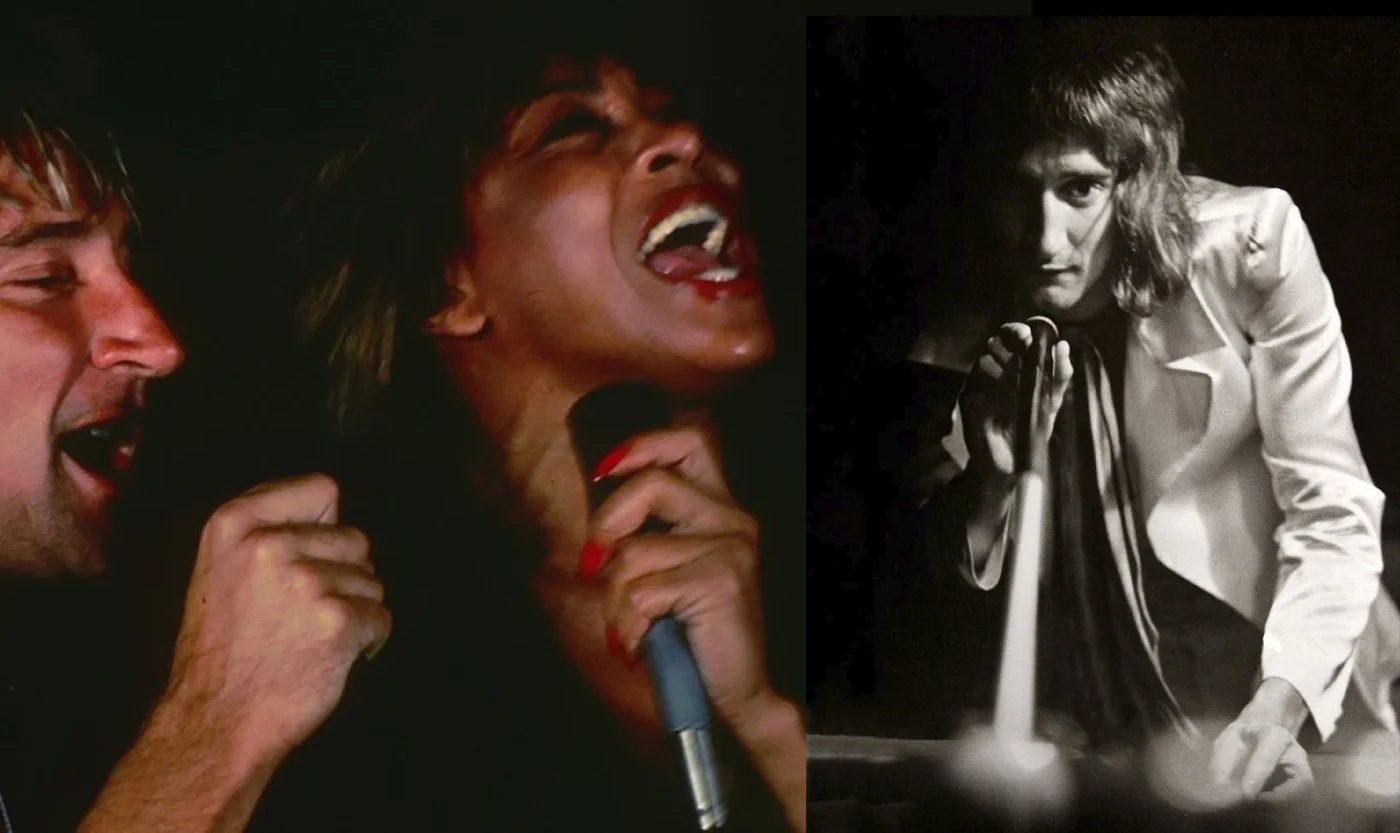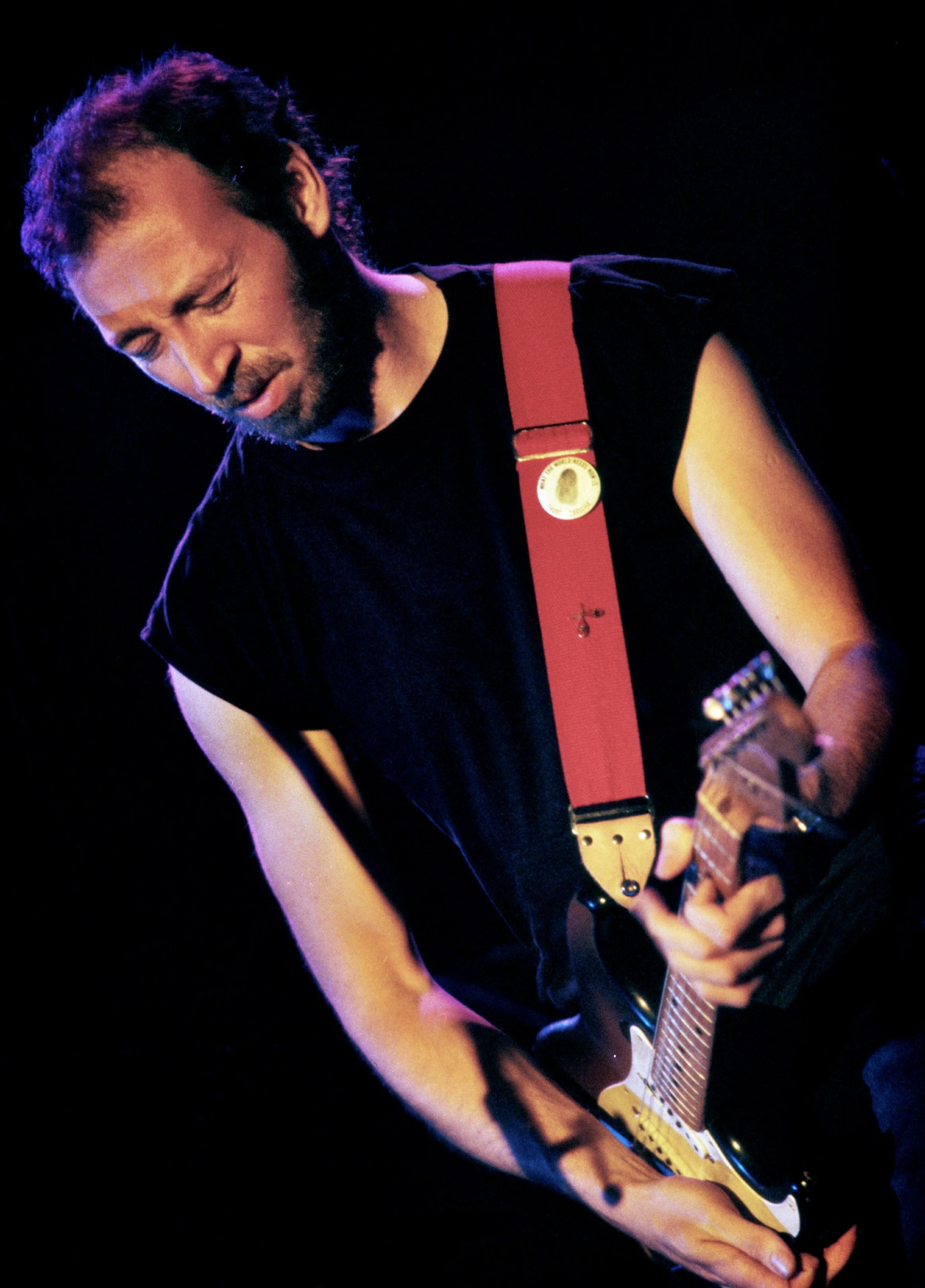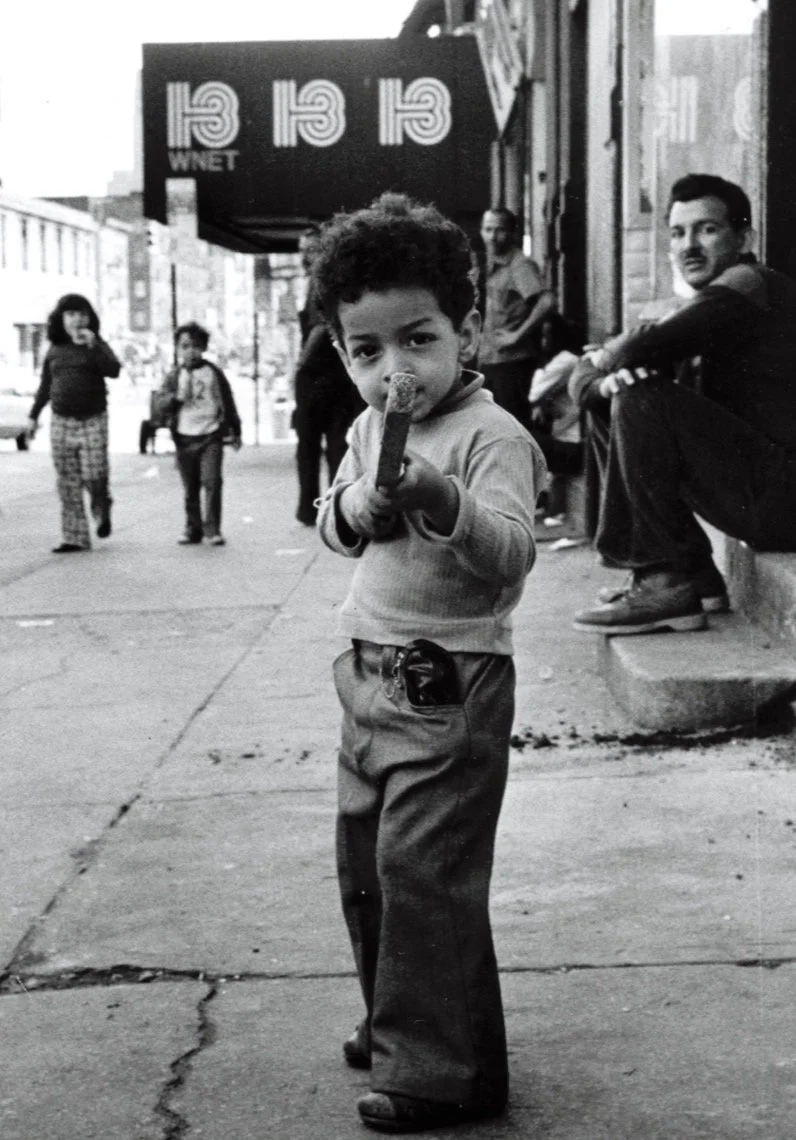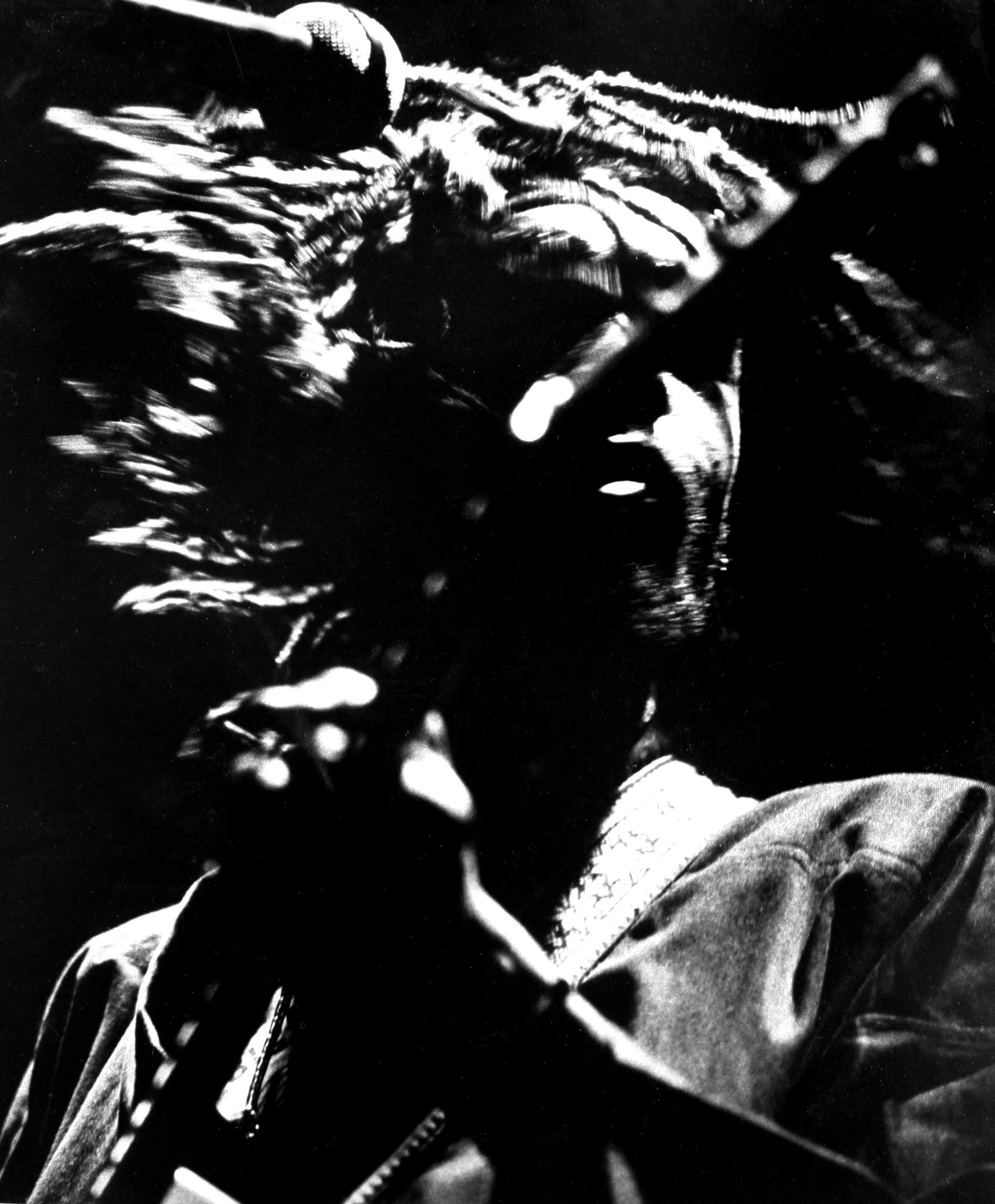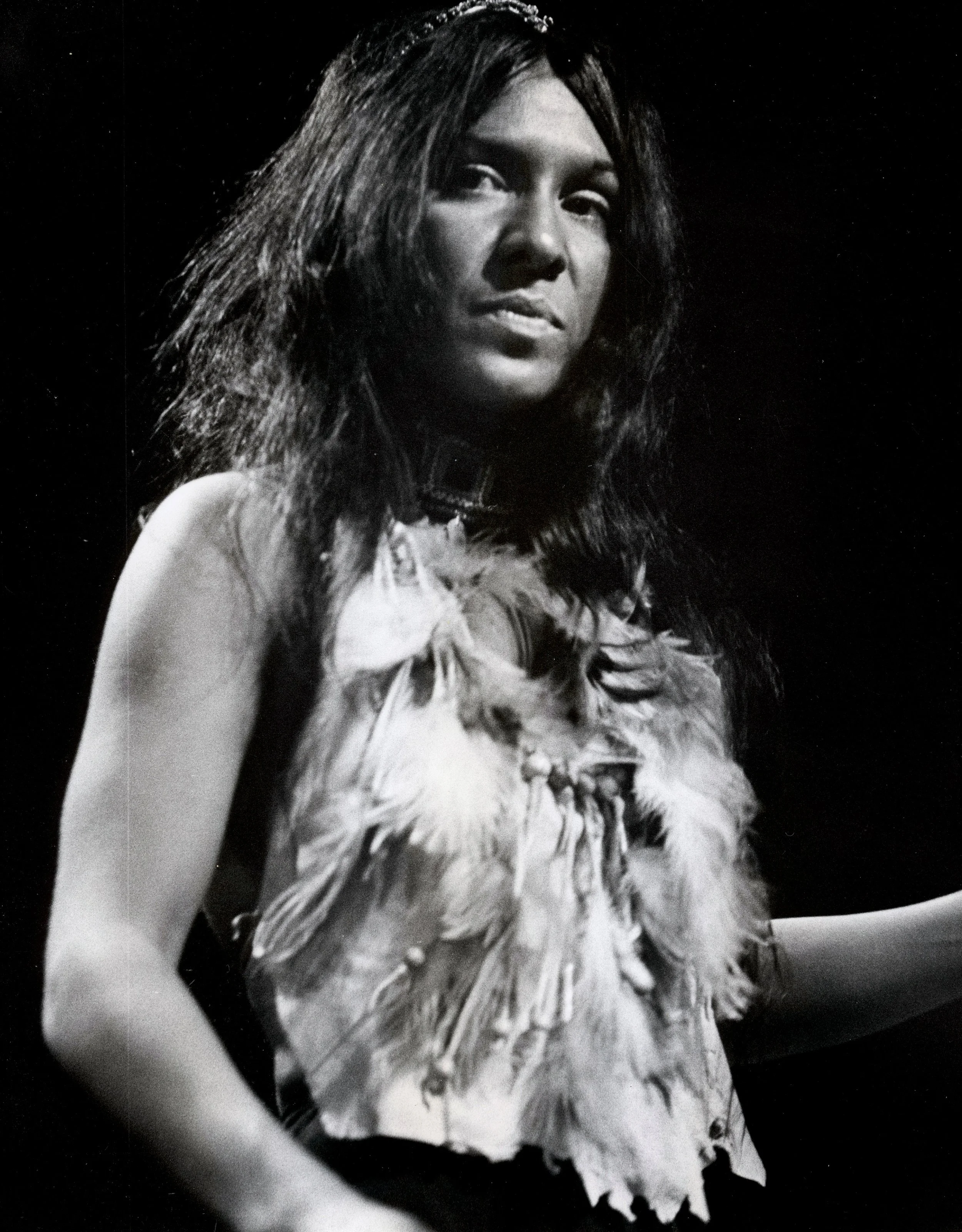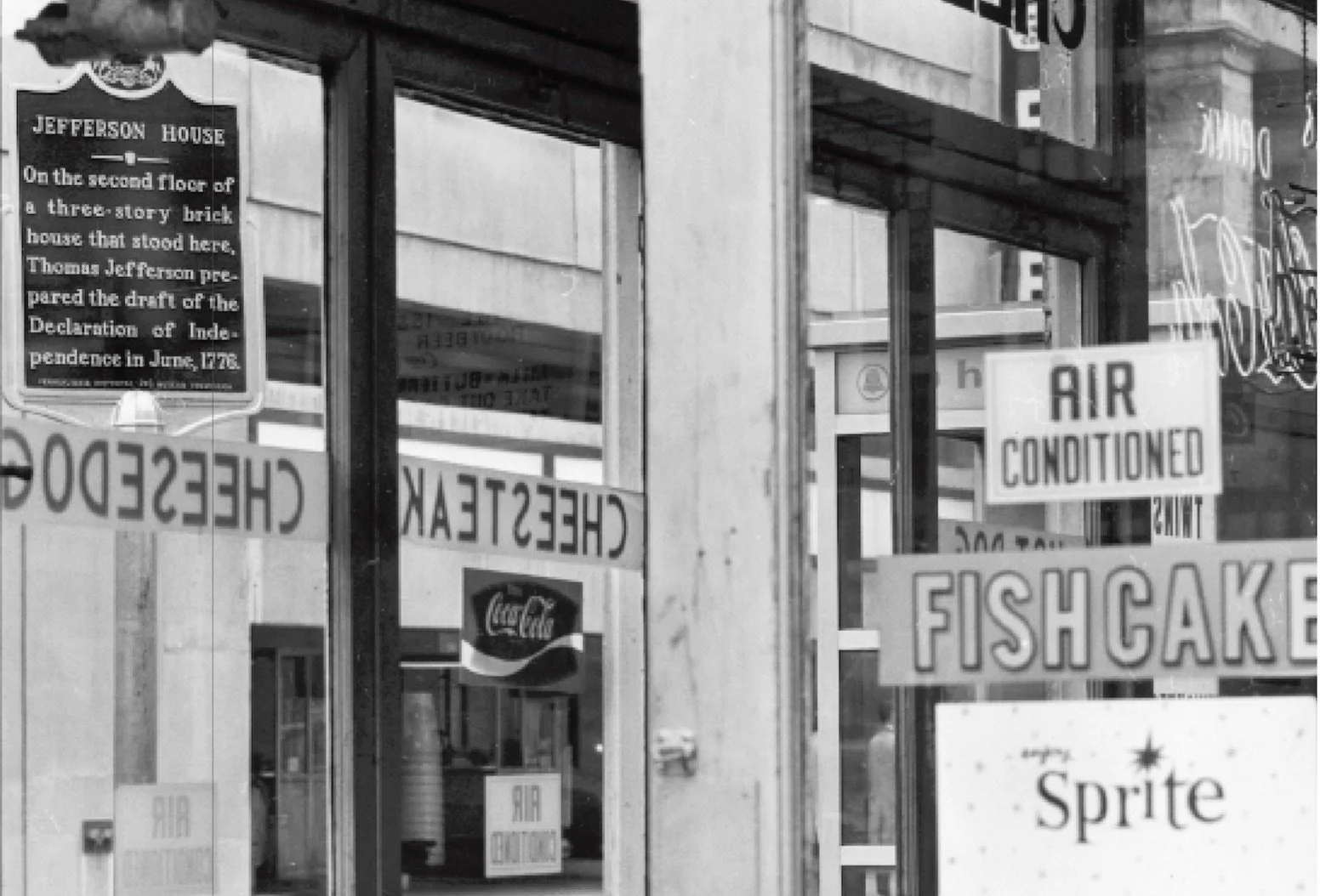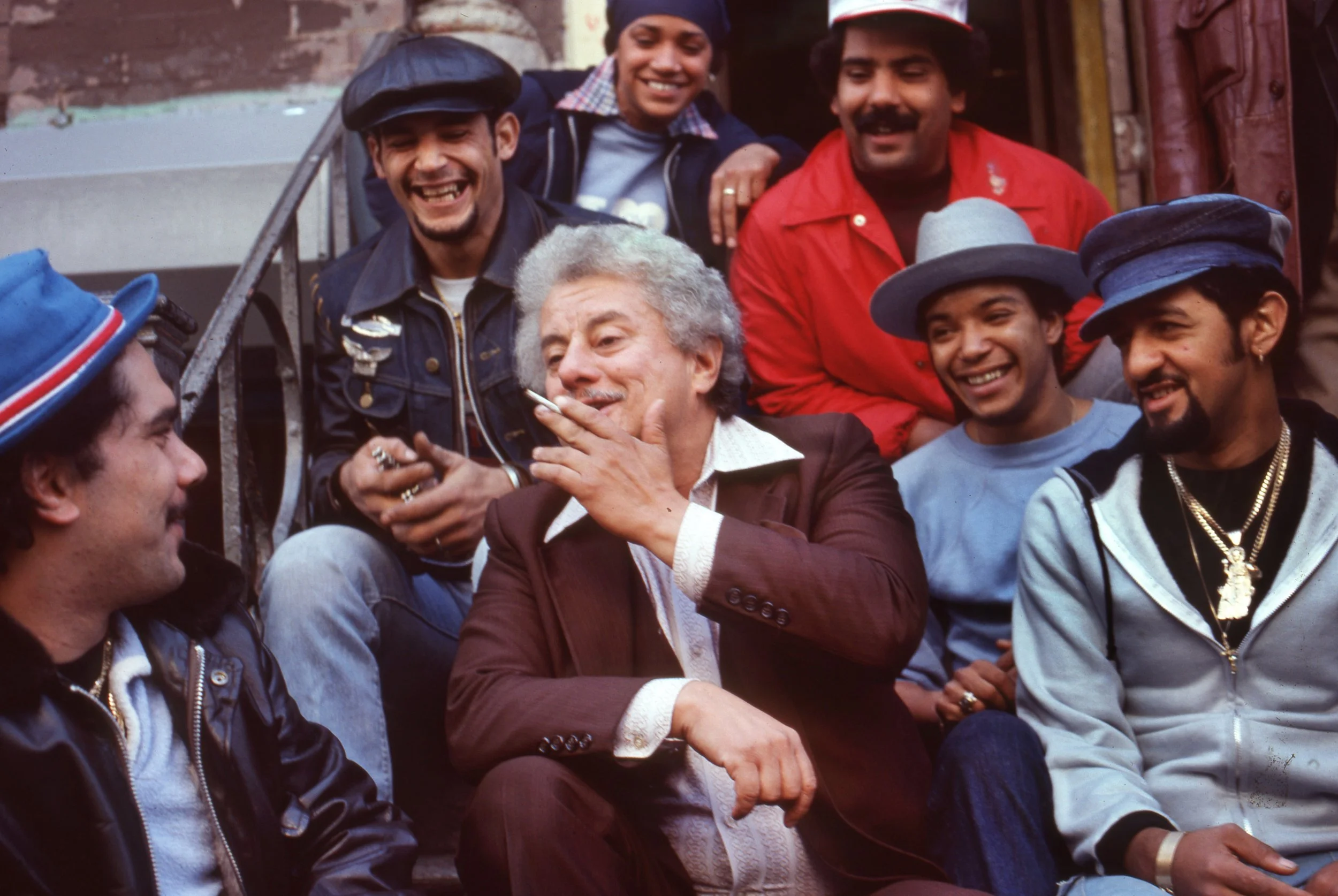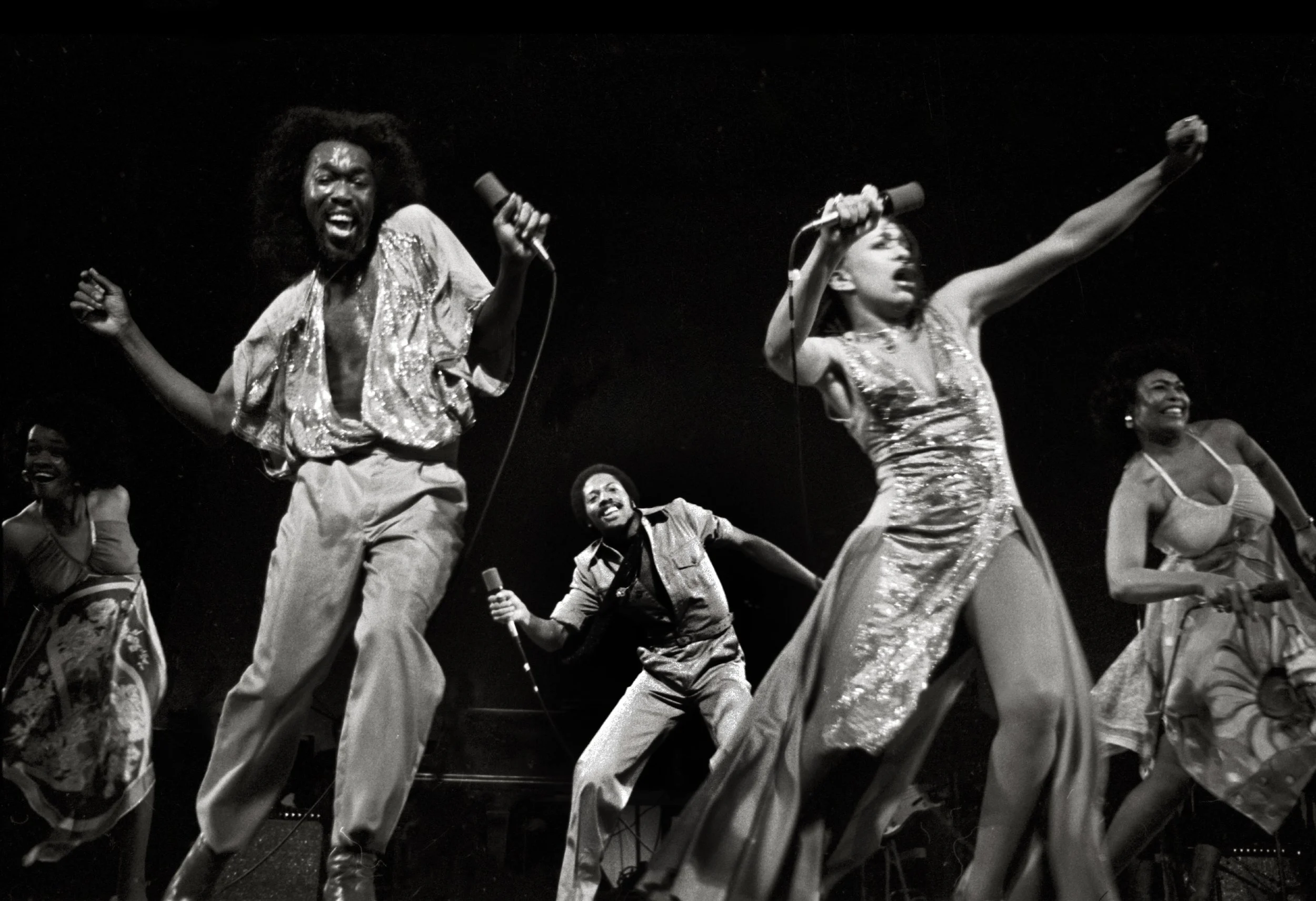The performing artist is a shaman of the night, a poet with a guitar, and a sculptor of time. Under the bright lights of a stage, that artist stands naked and vulnerable, while we in the audience sit in darkness, unexposed. Then suddenly, when least expected, a song grabs hold of us, and we experience our deep unarticulated feelings play out through the lyric and music and movement of the figure that stands before us. It seems like a one-way transmission, but, in fact, what’s happening is an interaction, a two-way magic mirror between audience and performer, each functions to transport the other beyond the surface of their daily lives. They are interdependent spirits kissing one-another across the lip of a stage.
These photographs were made in a period of raw cultural agony. The Vietnam-American War threatened the physical lives of our generation while our leaders were telling falsehoods on television; the stakes were high. We felt live human connection on the streets where we marched against what we felt was wrong, and in the clubs where poetic language echoed with near-religious intensity.
This collection ends in the early 1980’s when the bridge between performer and audience came to be mediated by a screen. I lost interest in photographing the subject when there was no longer any danger that my clothes would be soiled with the sweat of a live performer.
Bruce Springsteen
chapter ONE
Bob Dylan
Madeline Peyroux’s song, “Don’t Pick a Fight with a Poet,” asserts that it’s a bad idea to punch a poet in a bar. She says that you’ll never win, that true power doesn’t come from the fist, but rather in the ability to reframe the problem. The poet knows that winning, is just one side of a long story that can always be reimagined.
Roseanne Cash
Elvis Costello
Patti Smith
It’s an existential challenge to face a blank canvas, you might utterly fail and lose your will to live. It’s a bloody job to reach inside of one’s guts, locate a kernel of something original, and then spit it out in a form for all to see. Creators have the power to redefine their world and then to inhabit the world they’ve created. In that way, they are Godlike.
Billy Joel
James Taylor
Van Morrison
Peter Townshend
Leonard Cohen
Warren Zevon
Paul Simon
Carly Simon and James Taylor
Laura Nyro
Arlo Guthrie
Laura Nyro
Jackson Browne and David Lindley
Neil Young
Randy Newman
Stevie Wonder and Johnny Winter
Tom Waits
Phoebe Snow
Ry Cooder
Rod Stewart
John Prine
Janis Ian
Rufus Wainwright, Kate McGarrigle, Loudon Wainwright
Steve Forbert
Peter Gabriel
Lou Reed
Richard Thompson
Robbie Robertson
Bruce Springsteen
{2}
Aretha Franklin
Some people have to work hard to figure out who they are, others are just born with a talent for being themselves. They say such people don’t need a weatherman to know. They say such people directly experience pleasure as pleasurable, pain as painful. Present and grounded. It seems like an ideal talent to be born with. But there’s a catch, if it’s such a blessing, why do these folk always seem to be the ones singing the blues?
Muddy Waters
Mavis Staples
Bette Carter and Dizzy Gillespie
Al Jarreau
Patty Labelle
Roberta Flack
Tina Turner
Etta James
Jennifer Holiday
Dr.John
Van Morrison
Odetta and Taj Mahal
Darlene Love/ David Bromberg
{3}
E=MC2 was Albert Einstein’s formula for equating matter and energy. The geniuses who run the music business have evolved their own version of that formula; aspiring musicians bring endless amounts of energy and, at the speed of light, those modern alchemists convert their energy into matter in the form of a ticket, a T-shirt, a mug, or a Spotify subscription.
I personally benefit from this “commodification” system; I just sold a Springsteen picture to Live Nation, I’ll live for two weeks on the fee I received. Bruce’s energy live on stage was converted to matter in the form of a photographic print which was then converted back into energy in whatever form my life takes in the time and space that was bought by the print..
Rock and Roll, however, is neither soap nor is it a product of logic. From Elvis to Metallica, it’s been teaching us that there are planes of reality we didn’t learn about in school. The energy of our heart, our soul, our loins, that is another kind of truth. Sometimes we need to just put away the Einstein and dance.
Eddy Money
Maurice White, Earth Wind and Fire
Heart
Jackson Browne and David Lindley
Lou Reed and Bo Diddley
Tina Turner and Rod Stewart
Johnny and Edgar Winter
Meatloaf
Bruce Springsteen and Clarence Clemens
Richard Thompson
Stevie Ray Vaughn
{4}
I spent the summer of 1966 in Berkeley, California attempting to pass my college French requirement. Instead of learning French, I learned to drink and dance. I also became friends with a group of gay black graduate economics students; I marched with them in the first San Francisco gay pride parade and learned how it felt to stand apart from the norm, to be an outsider.
It was a time when cannabis and LSD were used as sacramental rites, as vehicles for transporting us beyond the limited vision we brought from the habitual lives we’d known since childhood. It was the time of Jefferson Airplane, Carlos Castaneda and Alan Watts. It was also a time of shocking political realities: the voting rights act had just been signed, the violence of The Vietnam War was invading our consciousness, there was SDS, hunger strikes, and marches on the Pentagon. And assassinations.
There were always songs at the protests in those days. We had new ones from Phil Ochs and Dylan, but mostly they were songs from our seemingly raceless All-American heritage of gospel-inspired spirituals. People Get Ready, We Shall Not Be Moved, This Little Light of Mine, Will the Circle Be Unbroken, We Shall Overcome. Everyone knew every word, or at least the words of the first verse.
Richie Havens
Peter Paul and Mary
Peter Tosh
Buffy Saint Marie
Dave Van Ronk
{5}
Gamble and Huff in Philadelphia and The O’Jays appearing in Atlantic City
Philadelphia, Detroit, Memphis, New Orleans, Muscle Shoals: places have souls. Obviously it’s really the people who live in those places who develop the style of the place. But how does that happen? It must be some relation between the historic and economic conditions of a place and the people who grow up there. And then there’s the random occurrence of individual genius; why else would Prince arise in Minneapolis?
Teddy Pendergrass in Philadelphia
Obviously, it’s the people who live in those places who develop the style of the place. But how does that happen? It must be some relation between the historic and economic conditions of a place and the people who grow up there. And then there’s the random occurrence of individual genius; why else would Prince emerge in Minneapolis?
Reuben Blades is from Panama
Mark Anthony is from Puerto Rico
Tito Puente from Puerto Rico is recognized in NYC
Jimmy Cliff is from Jamaica
Ashford and Simpson lived together in NYC)
John Prine and Steve Goodman were pals from Chicago
Bruce Springsteen is an emblem of New Jersey
Boris Grebenshikov and Yevgeny Yevtrushenko are from Russia
When our local heroes successfully use the language of the neighborhood to express universal themes, their sound sometimes comes to reverberate around the entire world.



